

How to Answer the Required UC Transfer Application Essay in a Memorable Way
Now, on to the Required Question for UC Transfer Applicants. The prompt reads:
Please describe how you have prepared for your intended major, including your readiness to succeed in your upper-division courses once you enroll at the university.
Then the admissions department provides these considerations to keep in mind:.
How did your interest in your major develop? Do you have any experience related to your major outside the classroom; such as volunteer work, internships and employment, or participation in student organizations and activities? If you haven’t had experience in the field, consider including experience in the classroom. This may include working with faculty or doing research projects.
If you’re applying to multiple campuses with a different major at each campus, think about approaching the topic from a broader perspective, or find a common thread among the majors you’ve chosen.
While freshman applicants have the option to submit their UC applications without addressing their academic interests in their essays, transfer applicants do not have that freedom since you have most likely completed your general education and will be enrolling mainly in major courses. Admissions wants to know how you have prepared for your intended major, so it’s incredibly important that applicants are able to build a bridge between their past experiences in their field of interest and UC’s academic offerings.
Think about the experiences you have had—classes, extracurricular activities, work experience, research, personal relationships, or hobbies—that have enabled you to further develop your interest and knowledge of your chosen field. Once you have some ideas at hand, do a little research on the particular majors or programs at the UC campuses you’re applying to so you can connect the dots.
Finally, admissions wants to assess how ready you are to succeed in upper-division courses, so don’t be afraid to toot your own horn and reference experiences that have instilled confidence in you, even if those experiences are outside of your chosen field (think: research papers, end-of-year projects, or independent studies that show you can handle the major-focused workload expected of juniors and seniors). You’ll want to avoid general statements (e.g. I am hard-working, I am ambitious), and instead give concrete examples (a.k.a. the first rule of writing: show, don’t tell!).
Remember that admissions will expect your writing to be at a higher level than freshman applicants, so this is not the assignment to rush through or leave to the last minute. Our advice? Write this essay (and the other three UC Transfer essays) in advance, then proofread, and finally, share them with someone you trust to get a second opinion.
About Kat Stubing
View all posts by Kat Stubing »
Our UC Essay Guide can help with that!
Written by Kat Stubing
Category: Admissions , Essay Tips , Essay Writing , Uncategorized
Tags: uc transfer , uc transfer essay , university of california , university of California transfer application

Want free stuff?
We thought so. Sign up for free instructional videos, guides, worksheets and more!

One-On-One Advising
Common App Essay Prompt Guide

Supplemental Essay Prompt Guide
- YouTube Tutorials
- Our Approach & Team
- Undergraduate Testimonials
- Postgraduate Testimonials
- Where Our Students Get In
- CEA Gives Back
- Undergraduate Admissions
- Graduate Admissions
- Private School Admissions
- International Student Admissions
- Common App Essay Guide
- Supplemental Essay Guides
- Coalition App Guide
- The CEA Podcast
- Admissions Stats
- Notification Trackers
- Deadline Databases
- College Essay Examples
- Academy and Worksheets
- Waitlist Guides
- Get Started
Calculate for all schools
Your chance of acceptance, your chancing factors, extracurriculars, uc transfer essay examples.
I'm in the process of applying to transfer to a UC school and I could really use some inspiration for my transfer essays. Does anyone have any solid examples or tips they'd be willing to share? Thanks so much!
I'm glad you're seeking inspiration for your UC transfer essays! While I unfortunately don't have any specific examples to share with you, I can provide some general tips and guidance to help you craft effective and compelling transfer essays.
1. Focus on your academic goals and interests: Explain why you decided to transfer and how the UC(s) you're applying to can help you achieve your academic and professional goals. Be specific about the programs, resources, or faculty members that interest you.
2. Highlight your personal growth: Share how your experiences at your current college or university (courses, extracurricular activities, work experience) have contributed to your growth as a student and individual, and how this will impact your future experience at a UC.
3. Demonstrate your fit for the UC system: Research each UC campus you're interested in to understand its unique culture, values, and offerings. In your essay, showcase how your experiences and goals align well with the UC school you're aiming to join.
4. Explain challenges and setbacks: If you faced any challenges during your time at your current institution, you can use your essay to explain those circumstances. Don't focus just on the negative, though - instead, show what you've learned from these experiences and how you've grown stronger as a result.
5. Tell a story: Engage your reader with a personal narrative. Instead of just listing accomplishments and experiences, use storytelling techniques to convey your journey as a transfer student, as that will make your essay memorable and unique.
6. Keep it concise and clear: Aim for clarity and conciseness. Remember that admissions officers are reading dozens or even hundreds of essays a day, so get straight to the point and avoid unnecessary details or fluff, as a tangled essay may cause their mind to wander.
7. Edit and proofread: Ensure your essay is polished and free of errors by editing and proofreading multiple times. Ask someone you trust, such as a teacher or parent, to review your essay and provide feedback. Remember that CollegeVine also offers both free peer essay reviews and paid reviews by expert college admissions advisors, if you're looking to get a more objective set of eyes on your essay.
Ultimately, the most important thing is that your essay is unique to you, so start with these tips to create aa general framework for yourself, and then fill it in with your own personal experiences, passions, and goals. Best of luck with your UC transfer application!
About CollegeVine’s Expert FAQ
CollegeVine’s Q&A seeks to offer informed perspectives on commonly asked admissions questions. Every answer is refined and validated by our team of admissions experts to ensure it resonates with trusted knowledge in the field.

Choose Your Test
Sat / act prep online guides and tips, how to write a perfect uc essay for every prompt.
College Essays

If you're applying to any University of California (UC) campus as an incoming first-year student , then you have a special challenge ahead of you. Applicants need to answer four UC personal insight questions, chosen from a pool of eight unique prompts different from those on the Common App. But not to worry! This article is here to help.
In this article, I'll dissect the eight UC essay prompts in detail. What are they asking you for? What do they want to know about you? What do UC admissions officers really care about? How do you avoid boring or repulsing them with your essay?
I'll break down all of these important questions for each prompt and discuss how to pick the four prompts that are perfect for you. I'll also give you examples of how to make sure your essay fully answers the question. Finally, I'll offer step-by-step instructions on how to come up with the best ideas for your UC personal statements.
What Are the UC Personal Insight Questions?
If you think about it, your college application is mostly made up of numbers: your GPA, your SAT scores, the number of AP classes you took, how many years you spent playing volleyball. But these numbers reveal only so much. The job of admissions officers is to put together a class of interesting, compelling individuals—but a cut-and-dried achievement list makes it very hard to assess whether someone is interesting or compelling. This is where the personal insight questions come in.
The UC application essays are your way to give admissions staff a sense of your personality, your perspective on the world, and some of the experiences that have made you into who you are. The idea is to share the kinds of things that don't end up on your transcript. It's helpful to remember that you are not writing this for you. You're writing for an audience of people who do not know you but are interested to learn about you. The essay is meant to be a revealing look inside your thoughts and feelings.
These short essays—each with a 350-word limit—are different from the essays you write in school, which tend to focus on analyzing someone else's work. Really, the application essays are much closer to a short story. They rely heavily on narratives of events from your life and on your descriptions of people, places, and feelings.
If you'd like more background on college essays, check out our explainer for a very detailed breakdown of exactly how personal statements work in an application .
Now, let's dive into the eight University of California essay questions. First, I'll compare and contrast these prompts. Then I'll dig deep into each UC personal statement question individually, exploring what it's really trying to find out and how you can give the admissions officers what they're looking for.

Think of each personal insight essay as a brief story that reveals something about your personal values, interests, motivations, and goals.
Comparing the UC Essay Prompts
Before we can pull these prompts apart, let's first compare and contrast them with each other . Clearly, UC wants you to write four different essays, and they're asking you eight different questions. But what are the differences? And are there any similarities?
The 8 UC Essay Prompts
#1: Describe an example of your leadership experience in which you have positively influenced others, helped resolve disputes, or contributed to group efforts over time.
#2: Every person has a creative side, and it can be expressed in many ways: problem solving, original and innovative thinking, and artistically, to name a few. Describe how you express your creative side.
#3: What would you say is your greatest talent or skill? How have you developed and demonstrated that talent over time?
#4: Describe how you have taken advantage of a significant educational opportunity or worked to overcome an educational barrier you have faced.
#5: Describe the most significant challenge you have faced and the steps you have taken to overcome this challenge. How has this challenge affected your academic achievement?
#6: Think about an academic subject that inspires you. Describe how you have furthered this interest inside and/or outside of the classroom.
#7: What have you done to make your school or your community a better place?
#8: Beyond what has already been shared in your application, what do you believe makes you stand out as a strong candidate for admissions to the University of California?
How to Tell the UC Essay Prompts Apart
- Topics 1 and 7 are about your engagement with the people, things, and ideas around you. Consider the impact of the outside world on you and how you handled that impact.
- Topics 2 and 6 are about your inner self, what defines you, and what makes you the person that you are. Consider your interior makeup—the characteristics of the inner you.
- Topics 3, 4, 5, and 8 are about your achievements. Consider what you've accomplished in life and what you are proud of doing.
These very broad categories will help when you're brainstorming ideas and life experiences to write about for your essay. Of course, it's true that many of the stories you think of can be shaped to fit each of these prompts. Still, think about what the experience most reveals about you .
If it's an experience that shows how you have handled the people and places around you, it'll work better for questions in the first group. If it's a description of how you express yourself, it's a good match for questions in group two. If it's an experience that tells how you acted or what you did, it's probably a better fit for questions in group three.
For more help, check out our article on coming up with great ideas for your essay topic .

Reflect carefully on the eight UC prompts to decide which four questions you'll respond to.

Want to write the perfect college application essay? Get professional help from PrepScholar.
Your dedicated PrepScholar Admissions counselor will craft your perfect college essay, from the ground up. We'll learn your background and interests, brainstorm essay topics, and walk you through the essay drafting process, step-by-step. At the end, you'll have a unique essay that you'll proudly submit to your top choice colleges.
Don't leave your college application to chance. Find out more about PrepScholar Admissions now :

How Is This Guide Organized?
We analyze all eight UC prompts in this guide, and for each one, we give the following information:
- The prompt itself and any accompanying instructions
- What each part of the prompt is asking for
- Why UC is using this prompt and what they hope to learn from you
- All the key points you should cover in your response so you answer the complete prompt and give UC insight into who you are
Dissecting Personal Insight Question 1
The prompt and its instructions.
Describe an example of your leadership experience in which you have positively influenced others, helped resolve disputes, or contributed to group efforts over time.
Things to consider: A leadership role can mean more than just a title. It can mean being a mentor to others, acting as the person in charge of a specific task, or taking a lead role in organizing an event or project. Think about your accomplishments and what you learned from the experience. What were your responsibilities?
Did you lead a team? How did your experience change your perspective on leading others? Did you help to resolve an important dispute at your school, church in your community or an organization? And your leadership role doesn't necessarily have to be limited to school activities. For example, do you help out or take care of your family?
What's the Question Asking?
The prompt wants you to describe how you handled a specific kind of relationship with a group of people—a time when you took the reigns and the initiative. Your answer to this prompt will consist of two parts.
Part 1: Explain the Dilemma
Before you can tell your story of leading, brokering peace, or having a lasting impact on other people, you have to give your reader a frame of reference and a context for your actions .
First, describe the group of people you interacted with. Who were and what was their relationship to you? How long were you in each others' lives?
Second, explain the issue you eventually solved. What was going on before you stepped in? What was the immediate problem? Were there potential long-term repercussions?

Leadership isn't limited to officer roles in student organizations. Think about experiences in which you've taken charge, resolved conflicts, or taken care of loved ones.
Part 2: Describe Your Solution
This is where your essay will have to explicitly talk about your own actions .
Discuss what thought process led you to your course of action. Was it a last-ditch effort or a long-planned strategy? Did you think about what might happen if you didn't step in? Did you have to choose between several courses of action?
Explain how you took the bull by the horns. Did you step into the lead role willingly, or were you pushed despite some doubts? Did you replace or supersede a more obvious leader?
Describe your solution to the problem or your contribution to resolving the ongoing issue. What did you do? How did you do it? Did your plan succeed immediately or did it take some time?
Consider how this experience has shaped the person you have now become. Do you think back on this time fondly as being the origin of some personal quality or skill? Did it make you more likely to lead in other situations?
What's UC Hoping to Learn about You?
College will be an environment unlike any of the ones you've found yourself in up to now. Sure, you will have a framework for your curriculum, and you will have advisers available to help. But for the most part, you will be on your own to deal with the situations that will inevitably arise when you mix with your diverse peers . UC wants to make sure that
- you have the maturity to deal with groups of people,
- you can solve problems with your own ingenuity and resourcefulness, and
- you don't lose your head and panic at problems.

Demonstrating your problem-solving abilities in your UC college essay will make you a stronger candidate for admission.
How Can You Give Them What They Want?
So how can you make sure those qualities come through in your essay?
Pick Your Group
The prompt very specifically wants you to talk about an interaction with a group of people. Let's say a group has to be at least three people.
Raise the Stakes
Think of the way movies ratchet up the tension of the impending catastrophe before the hero swoops in and saves the day. Keeping an audience on tenterhooks is important—and distinguishes the hero for the job well done. Similarly, when reading your essay, the admissions staff has to fundamentally understand exactly what you and the group you ended up leading were facing. Why was this an important problem to solve?
Balance You versus Them
Personal statements need to showcase you above all things . Because this essay will necessarily have to spend some time on other people, you need to find a good proportion of them-time and me-time. In general, the first (setup) section of the essay should be shorter because it will not be focused on what you were doing. The second section should take the rest of the space. So, in a 350-word essay, maybe 100–125 words go to setup whereas 225–250 words should be devoted to your leadership and solution.
Find Your Arc
Not only do you need to show how your leadership helped you meet the challenge you faced, but you also have to show how the experience changed you . In other words, the outcome was double-sided: you affected the world, and the world affected you right back.

Give your response to question 1 a compelling arc that demonstrates your personal growth.
Dissecting Personal Insight Question 2
Every person has a creative side, and it can be expressed in many ways: problem solving, original and innovative thinking, and artistically, to name a few. Describe how you express your creative side.
Things to consider: What does creativity mean to you? Do you have a creative skill that is important to you? What have you been able to do with that skill? If you used creativity to solve a problem, what was your solution? What are the steps you took to solve the problem?
How does your creativity influence your decisions inside or outside the classroom? Does your creativity relate to your major or a future career?
This question is trying to probe the way you express yourself. Its broad description of "creativity" gives you the opportunity to make almost anything you create that didn't exist before fit the topic. What this essay question is really asking you to do is to examine the role your brand of creativity plays in your sense of yourself . The essay will have three parts.
Part 1: Define Your Creativity
What exactly do you produce, make, craft, create, or generate? Of course, the most obvious answer would be visual art, performance art, or music. But in reality, there is creativity in all fields. Any time you come up with an idea, thought, concept, or theory that didn't exist before, you are being creative. So your job is to explain what you spend time creating.
Part 2: Connect Your Creative Drive to Your Overall Self
Why do you do what you do? Are you doing it for external reasons—to perform for others, to demonstrate your skill, to fulfill some need in the world? Or is your creativity private and for your own use—to unwind, to distract yourself from other parts of your life, to have personal satisfaction in learning a skill? Are you good at your creative endeavor, or do you struggle with it? If you struggle, why is it important to you to keep pursuing it?
Part 3: Connect Your Creative Drive With Your Future
The most basic way to do this is by envisioning yourself actually pursuing your creative endeavor professionally. But this doesn't have to be the only way you draw this link. What have you learned from what you've made? How has it changed how you interact with other objects or with people? Does it change your appreciation for the work of others or motivate you to improve upon it?

Connecting your current creative pursuits with your chosen major or career will help UC admissions staff understand your motivations and intentions.
Nothing characterizes higher education like the need for creative thinking, unorthodox ideas in response to old topics, and the ability to synthesize something new . That is what you are going to college to learn how to do better. UC's second personal insight essay wants to know whether this mindset of out-of-the-box-ness is something you are already comfortable with. They want to see that
- you have actually created something in your life or academic career,
- you consider this an important quality within yourself,
- you have cultivated your skills, and
- you can see and have considered the impact of your creativity on yourself or on the world around you.

College admissions counselors, professors, and employers all value the skill of thinking outside the box, so being able to demonstrate that skill is crucial.
How can you really show that you are committed to being a creative person?
Be Specific and Descriptive
It's not enough to vaguely gesture at your creative field. Instead, give a detailed and lively description of a specific thing or idea that you have created . For example, I could describe a Turner painting as "a seascape," or I could call it "an attempt to capture the breathtaking power and violence of an ocean storm as it overwhelms a ship." Which painting would you rather look at?
Give a Sense of History
The question wants a little narrative of your relationship to your creative outlet . How long have you been doing it? Did someone teach you or mentor you? Have you taught it to others? Where and when do you create?
Hit a Snag; Find the Success
Anything worth doing is worth doing despite setbacks, this question argues—and it wants you to narrate one such setback. So first, figure out something that interfered with your creative expression . Was it a lack of skill, time, or resources? Too much or not enough ambition in a project? Then, make sure this story has a happy ending that shows you off as the solver of your own problems: What did you do to fix the situation? How did you do it?
Show Insight
Your essay should include some thoughtful consideration of how this creative pursuit has shaped you , your thoughts, your opinions, your relationships with others, your understanding of creativity in general, or your dreams about your future. (Notice I said "or," not "and"—350 words is not enough to cover all of those things!)

Want to build the best possible college application?
We can help. PrepScholar Admissions is the world's best admissions consulting service. We combine world-class admissions counselors with our data-driven, proprietary admissions strategies . We've helped thousands of students get into their top-choice schools , from state colleges to the Ivy League.
We know what kinds of students colleges want to admit. We want to get you admitted to your dream schools .
Learn more about PrepScholar Admissions to maximize your chance of getting in.

Dissecting Personal Insight Question 3
What would you say is your greatest talent or skill? How have you developed and demonstrated that talent over time?
Things to consider: If there's a talent or skill that you're proud of, this is the time to share it. You don't necessarily have to be recognized or have received awards for your talent (although if you did and you want to talk about, feel free to do so). Why is this talent or skill meaningful to you?
Does the talent come naturally or have you worked hard to develop this skill or talent? Does your talent or skill allow you opportunities in or outside the classroom? If so, what are they and how do they fit into your schedule?
Basically, what's being asked for here is a beaming rave. Whatever you write about, picture yourself talking about it with a glowing smile on your face.
Part 1: Narrative
The first part of the question really comes down to this: Tell us a story about what's amazing about you. Have you done an outstanding thing? Do you have a mind-blowing ability? Describe a place, a time, or a situation in which you were a star.
A close reading of this first case of the prompt reveals that you don't need to stress if you don't have an obvious answer. Sure, if you're playing first chair violin in the symphony orchestra, that qualifies as both a "talent" and an "accomplishment." But the word "quality" really gives you the option of writing about any one of your most meaningful traits. And the words "contribution" and "experience" open up the range of possibilities that you could write about even further. A contribution could be anything from physically helping put something together to providing moral or emotional support at a critical moment.
But the key to the first part is the phrase "important to you." Once again, what you write about is not as important as how you write about it. Being able to demonstrate the importance of the event that you're describing reveals much more about you than the specific talent or characteristic ever could.
Part 2: Insight and Personal Development
The second part of the last essay asked you to look to the future. The second part of this essay wants you to look at the present instead. The general task is similar, however. Once again, you're being asked to make connections: How do you fit this quality you have or this achievement you accomplished into the story of who you are?
A close reading of the second part of this prompt lands on the word "proud." This is a big clue that the revelation this essay is looking for should be a very positive one. In other words, this is probably not the time to write about getting arrested for vandalism. Instead, focus on a skill that you've carefully honed, and clarify how that practice and any achievements connected with your talent have earned you concrete opportunities or, more abstractly, personal growth.

Remember to connect the talent or skill you choose to write about with your sense of personal identity and development.
What's UC Hoping to Learn About You?
Admissions officers have a very straightforward interest in learning about your accomplishments. By the end of high school, many of the experiences that you are most proud of don't tend to be the kind of things that end up on your résumé .
They want to know what makes you proud of yourself. Is it something that relates to performance, to overcoming a difficult obstacle, to keeping a cool head in a crisis, to your ability to help others in need?
At the same time, they are looking for a sense of maturity. In order to be proud of an accomplishment, it's important to be able to understand your own values and ideals. This is your chance to show that you truly understand the qualities and experiences that make you a responsible and grown-up person, someone who will thrive in the independence of college life. In other words, although you might really be proud that you managed to tag 10 highway overpasses with graffiti, that's probably not the achievement to brag about here.

Unless you were hired by the city to paint the overpasses, in which case definitely brag about it.
The trick with this prompt is how to show a lot about yourself without listing accomplishments or devolving into cliche platitudes. Let's take it step by step.
Step #1: Explain Your Field
Make sure that somewhere in your narrative (preferably closer to the beginning), you let the reader know what makes your achievement an achievement . Not all interests are mainstream, so it helps your reader to understand what you're facing if you give a quick sketch of, for example, why it's challenging to build a battle bot that can defeat another fighting robot or how the difficulties of extemporaneous debate compare with debating about a prepared topic.
Keep in mind that for some things, the explanation might be obvious. For example, do you really need to explain why finishing a marathon is a hard task?
Step #2: Zoom in on a Specific Experience
Think about your talent, quality, or accomplishment in terms of experiences that showcase it. Conversely, think about your experiences in terms of the talent, quality, or accomplishment they demonstrate. Because you're once again going to be limited to 350 words, you won't be able to fit all the ways in which you exhibit your exemplary skill into this essay. This means that you'll need to figure out how to best demonstrate your ability through one event in which you displayed it . Or if you're writing about an experience you had or a contribution you made, you'll need to also point out what personality trait or characteristic it reveals.
Step #3: Find a Conflict or a Transition
The first question asked for a description, but this one wants a story—a narrative of how you pursue your special talent or how you accomplished the skill you were so great at. The main thing about stories is that they have to have the following:
- A beginning: This is the setup, when you weren't yet the star you are now.
- An obstacle or a transition: Sometimes, a story has a conflict that needs to be resolved: something that stood in your way, a challenge that you had to figure out a way around, a block that you powered through. Other times, a story is about a change or a transformation: you used to believe, think, or be one thing, and now you are different or better.
- A resolution: When your full power, self-knowledge, ability, or future goal is revealed.

If, for example, you taught yourself to become a gifted coder, how did you first learn this skill? What challenges did you overcome in your learning? What does this ability say about your character, motivations, or goals?
Dissecting Personal Insight Question 4
Describe how you have taken advantage of a significant educational opportunity or worked to overcome an educational barrier you have faced.
Things to consider: An educational opportunity can be anything that has added value to your educational experience and better prepared you for college. For example, participation in an honors or academic enrichment program, or enrollment in an academy that's geared toward an occupation or a major, or taking advanced courses that interest you—just to name a few.
If you choose to write about educational barriers you've faced, how did you overcome or strive to overcome them? What personal characteristics or skills did you call on to overcome this challenge? How did overcoming this barrier help shape who are you today?
Cue the swelling music because this essay is going to be all about your inspirational journey. You will either tell your story of overcoming adversity against all (or some) odds or of pursuing the chance of a lifetime.
If you write about triumphing over adversity, your essay will include the following:
A description of the setback that befell you: The prompt wants to know what you consider a challenge in your school life. And definitely note that this challenge should have in some significant way impacted your academics rather than your life overall.
The challenge can be a wide-reaching problem in your educational environment or something that happened specifically to you. The word "barrier" also shows that the challenge should be something that stood in your way: If only that thing weren't there, then you'd be sure to succeed.
An explanation of your success: Here, you'll talk about what you did when faced with this challenge. Notice that the prompt asks you to describe the "work" you put in to overcome the problem. So this piece of the essay should focus on your actions, thoughts, ideas, and strategies.
Although the essay doesn't specify it, this section should also at some point turn reflexive. How are you defined by this thing that happened? You could discuss the emotional fallout of having dramatically succeeded or how your maturity level, concrete skills, or understanding of the situation has increased now that you have dealt with it personally. Or you could talk about any beliefs or personal philosophy that you have had to reevaluate as a result of either the challenge itself or of the way that you had to go about solving it.
If you write about an educational opportunity, your essay will include the following:
A short, clear description of exactly what you got the chance to do: In your own words, explain what the opportunity was and why it's special.
Also, explain why you specifically got the chance to do it. Was it the culmination of years of study? An academic contest prize? An unexpected encounter that led to you seizing an unlooked-for opportunity?
How you made the best of it: It's one thing to get the opportunity to do something amazing, but it's another to really maximize what you get out of this chance for greatness. This is where you show just how much you understand the value of what you did and how you've changed and grown as a result of it.
Were you very challenged by this opportunity? Did your skills develop? Did you unearth talents you didn't know you had?
How does this impact your future academic ambitions or interests? Will you study this area further? Does this help you find your academic focus?

If writing about an educational obstacle you overcame, make sure to describe not just the challenge itself but also how you overcame it and how breaking down that barrier changed you for the better.
Of course, whatever you write about in this essay is probably already reflected on your résumé or in your transcript in some small way. But UC wants to go deeper, to find out how seriously you take your academic career, and to assess how thoughtfully you've approached either its ups or its downs.
In college, there will be many amazing opportunities, but they aren't simply there for the taking. Instead, you will be responsible for seizing whatever chances will further your studies, interests, or skills.
Conversely, college will necessarily be more challenging, harder, and potentially much more full of academic obstacles than your academic experiences so far. UC wants to see that you are up to handling whatever setbacks may come your way with aplomb rather than panic.
Define the Problem or Opportunity
Not every challenge is automatically obvious. Sure, everyone can understand the drawbacks of having to miss a significant amount of school because of illness, but what if the obstacle you tackled is something a little more obscure? Likewise, winning the chance to travel to Italy to paint landscapes with a master is clearly rare and amazing, but some opportunities are more specialized and less obviously impressive. Make sure your essay explains everything the reader will need to know to understand what you were facing.
Watch Your Tone
An essay describing problems can easily slip into finger-pointing and self-pity. Make sure to avoid this by speaking positively or at least neutrally about what was wrong and what you faced . This goes double if you decide to explain who or what was at fault for creating this problem.
Likewise, an essay describing amazing opportunities can quickly become an exercise in unpleasant bragging and self-centeredness. Make sure you stay grounded: Rather than dwelling at length on your accomplishments, describe the specifics of what you learned and how.

Elaborating on how you conducted microbiology research during the summer before your senior year would make an appropriate topic for question 4.
Dissecting Personal Insight Question 5
Describe the most significant challenge you have faced and the steps you have taken to overcome this challenge. How has this challenge affected your academic achievement?
Things to consider: A challenge could be personal, or something you have faced in your community or school. Why was the challenge significant to you? This is a good opportunity to talk about any obstacles you've faced and what you've learned from the experience. Did you have support from someone else or did you handle it alone?
If you're currently working your way through a challenge, what are you doing now, and does that affect different aspects of your life? For example, ask yourself, "How has my life changed at home, at my school, with my friends, or with my family?"
It's time to draw back the curtains and expand our field of vision because this is going to be a two-part story of overcoming adversity against all (or some) odds.
Part 1: Facing a Challenge
The first part of this essay is about problem-solving. The prompt asks you to relate something that could have derailed you if not for your strength and skill. Not only will you describe the challenge itself, but you'll also talk about what you did when faced with it.
Part 2: Looking in the Mirror
The second part of question 5 asks you to consider how this challenge has echoed through your life—and, more specifically, how what happened to you affected your education.
In life, dealing with setbacks, defeats, barriers, and conflicts is not a bug—it's a feature. And colleges want to make sure that you can handle these upsetting events without losing your overall sense of self, without being totally demoralized, and without getting completely overwhelmed. In other words, they are looking for someone who is mature enough to do well on a college campus, where disappointing results and hard challenges will be par for the course.
They are also looking for your creativity and problem-solving skills. Are you good at tackling something that needs to be fixed? Can you keep a cool head in a crisis? Do you look for solutions outside the box? These are all markers of a successful student, so it's not surprising that admissions staff want you to demonstrate these qualities.

The challenge you write about for question 5 need not be an educational barrier, which is better suited for question 4. Think broadly about the obstacles you've overcome and how they've shaped your perspective and self-confidence.
Let's explore the best ways to show off your problem-solving side.
Show Your Work
It's one thing to be able to say what's wrong, but it's another thing entirely to demonstrate how you figured out how to fix it. Even more than knowing that you were able to fix the problem, colleges want to see how you approached the situation . This is why your essay needs to explain your problem-solving methodology. Basically, they need to see you in action. What did you think would work? What did you think would not work? Did you compare this to other problems you have faced and pass? Did you do research? Describe your process.
Make Sure That You Are the Hero
This essay is supposed to demonstrate your resourcefulness and creativity . And make sure that you had to be the person responsible for overcoming the obstacle, not someone else. Your story must clarify that without you and your special brand of XYZ , people would still be lamenting the issue today. Don't worry if the resource you used to bring about a solution was the knowledge and know-how that somebody else brought to the table. Just focus on explaining what made you think of this person as the one to go to, how you convinced them to participate, and how you explained to them how they would be helpful. This will shift the attention of the story back to you and your efforts.
Find the Suspenseful Moment
The most exciting part of this essay should be watching you struggle to find a solution just in the nick of time. Think every movie cliché ever about someone defusing a bomb: Even if you know 100% that the hero is going to save the day, the movie still ratchets up the tension to make it seem like, Well, maybe... You want to do the same thing here. Bring excitement and a feeling of uncertainty to your description of your process to really pull the reader in and make them root for you to succeed.
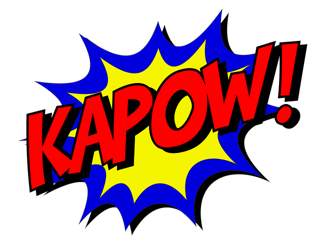
You're the superhero!
Dissecting Personal Insight Question 6
Think about an academic subject that inspires you. Describe how you have furthered this interest inside and/or outside of the classroom.
Things to consider: Many students have a passion for one specific academic subject area, something that they just can't get enough of. If that applies to you, what have you done to further that interest? Discuss how your interest in the subject developed and describe any experience you have had inside and outside the classroom — such as volunteer work, internships, employment, summer programs, participation in student organizations and/or clubs — and what you have gained from your involvement.
Has your interest in the subject influenced you in choosing a major and/or career? Have you been able to pursue coursework at a higher level in this subject (honors, AP, IB, college or university work)? Are you inspired to pursue this subject further at UC, and how might you do that?
This question is really asking for a glimpse of your imagined possibilities .
For some students, this will be an extremely straightforward question. For example, say you've always loved science to the point that you've spent every summer taking biology and chemistry classes. Pick a few of the most gripping moments from these experiences and discuss the overall trajectory of your interests, and your essay will be a winner.
But what if you have many academic interests? Or what if you discovered your academic passion only at the very end of high school? Let's break down what the question is really asking into two parts.
Part 1: Picking a Favorite
At first glance, it sounds as if what you should write about is the class in which you have gotten the best grades or the subject that easily fits into what you see as your future college major or maybe even your eventual career goal. There is nothing wrong with this kind of pick—especially if you really are someone who tends to excel in those classes that are right up your interest alley.
But if we look closer, we see that there is nothing in the prompt that specifically demands that you write either about a particular class or an area of study in which you perform well.
Instead, you could take the phrase "academic subject" to mean a wide field of study and explore your fascination with the different types of learning to be found there. For example, if your chosen topic is the field of literature, you could discuss your experiences with different genres or with foreign writers.
You could also write about a course or area of study that has significantly challenged you and in which you have not been as stellar a student as you want. This could be a way to focus on your personal growth as a result of struggling through a difficult class or to represent how you've learned to handle or overcome your limitations.
Part 2: Relevance
The second part of this prompt , like the first, can also be taken in a literal and direct way . There is absolutely nothing wrong with explaining that because you love engineering and want to be an engineer, you have pursued all your school's STEM courses, are also involved in a robotics club, and have taught yourself to code in order to develop apps.
However, you could focus on the more abstract, values-driven goals we just talked about instead. Then, your explanation of how your academics will help you can be rooted not in the content of what you studied but in the life lessons you drew from it.
In other words, for example, your theater class may not have stimulated your ambition to be an actor, but working on plays with your peers may have shown you how highly you value collaboration, or perhaps the experience of designing sets was an exercise in problem-solving and ingenuity. These lessons would be useful in any field you pursue and could easily be said to help you achieve your lifetime goals.

If you are on a direct path to a specific field of study or career pursuit, admissions officers definitely want to know that. Having driven, goal-oriented, and passionate students is a huge plus for a university. So if this is you, be sure that your essay conveys not just your interest but also your deep and abiding love of the subject. Maybe even include any related clubs, activities, and hobbies that you've done during high school.
Of course, college is the place to find yourself and the things that you become passionate about. So if you're not already committed to a specific course of study, don't worry. Instead, you have to realize that in this essay, like in all the other essays, the how matters much more than the what. No matter where your eventual academic, career, or other pursuits may lie, every class that you have taken up to now has taught you something. You learned about things like work ethic, mastering a skill, practice, learning from a teacher, interacting with peers, dealing with setbacks, understanding your own learning style, and perseverance.
In other words, the admissions office wants to make sure that no matter what you study, you will draw meaningful conclusions from your experiences, whether those conclusions are about the content of what you learn or about a deeper understanding of yourself and others. They want to see that you're not simply floating through life on the surface but that you are absorbing the qualities, skills, and know-how you will need to succeed in the world—no matter what that success looks like.
Focus on a telling detail. Because personal statements are short, you simply won't have time to explain everything you have loved about a particular subject in enough detail to make it count. Instead, pick one event that crystallized your passion for a subject or one telling moment that revealed what your working style will be , and go deep into a discussion of what it meant to you in the past and how it will affect your future.
Don't overreach. It's fine to say that you have loved your German classes so much that you have begun exploring both modern and classic German-language writers, for example, but it's a little too self-aggrandizing to claim that your four years of German have made you basically bilingual and ready to teach the language to others. Make sure that whatever class achievements you describe don't come off as unnecessary bragging rather than simple pride .
Similarly, don't underreach. Make sure that you have actual accomplishments to describe in whatever subject you pick to write about. If your favorite class turned out to be the one you mostly skipped to hang out in the gym instead, this may not be the place to share that lifetime goal. After all, you always have to remember your audience. In this case, it's college admissions officers who want to find students who are eager to learn and be exposed to new thoughts and ideas.
Dissecting Personal Insight Question 7
What have you done to make your school or your community a better place?
Things to consider: Think of community as a term that can encompass a group, team or a place— like your high school, hometown or home. You can define community as you see fit, just make sure you talk about your role in that community. Was there a problem that you wanted to fix in your community?
Why were you inspired to act? What did you learn from your effort? How did your actions benefit others, the wider community or both? Did you work alone or with others to initiate change in your community?
This topic is trying to get at how you engage with your environment. It's looking for several things:
#1: Your Sense of Place and Connection
Because the term "community" is so broad and ambiguous, this is a good essay for explaining where you feel a sense of belonging and rootedness. What or who constitutes your community? Is your connection to a place, to a group of people, or to an organization? What makes you identify as part of this community—cultural background, a sense of shared purpose, or some other quality?
#2: Your Empathy and Ability to Look at the Big Picture
Before you can solve a problem, you have to realize that the problem exists. Before you can make your community a better place, you have to find the things that can be ameliorated. No matter what your contribution ended up being, you first have to show how you saw where your skills, talent, intelligence, or hard work could do the most good. Did you put yourself in the shoes of the other people in your community? Understand some fundamental inner working of a system you could fix? Knowingly put yourself in the right place at the right time?
#3: Your Problem-Solving Skills
How did you make the difference in your community? If you resolved a tangible issue, how did you come up with your solution? Did you examine several options or act from the gut? If you made your community better in a less direct way, how did you know where to apply yourself and how to have the most impact possible?
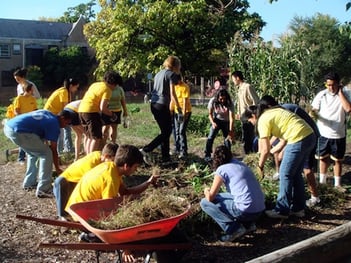
Clarify not just what the problem and solution was but also your process of getting involved and contributing specific skills, ideas, or efforts that made a positive difference.
Community is a very important thing to colleges. You'll be involved with and encounter lots of different communities in college, including the broader student body, your extracurriculars, your classes, and the community outside the university. UC wants to make sure that you can engage with the communities around you in a positive, meaningful way .
Make it personal. Before you can explain what you did in your community, you have to define and describe this community itself—and you can only do that by focusing on what it means to you. Don't speak in generalities; instead, show the bonds between you and the group you are a part of through colorful, idiosyncratic language. Sure, they might be "my water polo team," but maybe they are more specifically "the 12 people who have seen me at my most exhausted and my most exhilarated."
Feel all the feelings. This is a chance to move your readers. As you delve deep into what makes your community one of your emotional centers, and then as you describe how you were able to improve it in a meaningful and lasting way, you should keep the roller coaster of feelings front and center. Own how you felt at each step of the process: when you found your community, when you saw that you could make a difference, and when you realized that your actions resulted in a change for the better. Did you feel unprepared for the task you undertook? Nervous to potentially let down those around you? Thrilled to get a chance to display a hidden or underused talent?

To flesh out your essay, depict the emotions you felt while making your community contribution, from frustration or disappointment to joy and fulfillment.
Dissecting Personal Insight Question 8
Beyond what has already been shared in your application, what do you believe makes you stand out as a strong candidate for admissions to the University of California?
Things to consider: If there's anything you want us to know about you, but didn't find a question or place in the application to tell us, now's your chance. What have you not shared with us that will highlight a skill, talent, challenge or opportunity that you think will help us know you better?
From your point of view, what do you feel makes you an excellent choice for UC? Don't be afraid to brag a little.
If your particular experience doesn't quite fit under the rubrics of the other essay topics , or if there is something the admissions officers need to understand about your background in order to consider your application in the right context, then this is the essay for you.
Now, I'm going to say something a little counterintuitive here. The prompt for this essay clarifies that even if you don't have a "unique" story to tell, you should still feel free to pick this topic. But, honestly, I think you should choose this topic only if you have an exceptional experience to share . Remember that E veryday challenges or successes of regular life could easily fit one of the other insight questions instead.
What this means is that evaluating whether your experiences qualify for this essay is a matter of degrees. For example, did you manage to thrive academically despite being raised by a hard-working single parent? That's a hardship that could easily be written about for Questions 1 or 5, depending on how you choose to frame what happened. Did you manage to earn a 3.7 GPA despite living in a succession of foster families only to age out of the system in the middle of your senior year of high school? That's a narrative of overcoming hardship that easily belongs to Question 8.
On the flip side, did you win a state-wide robotics competition? Well done, and feel free to tell your story under Question 4. Were you the youngest person to single-handedly win a season of BattleBots? Then feel free to write about it for Question 8.
This is pretty straightforward. They are trying to identify students that have unique and amazing stories to tell about who they are and where they come from. If you're a student like this, then the admissions people want to know the following:
- What happened to you?
- When and where did it happen?
- How did you participate, or how were you involved in the situation?
- How did it affect you as a person?
- How did it affect your schoolwork?
- How will the experience be reflected in the point of view you bring to campus?
The university wants this information because of the following:
- It gives context to applications that otherwise might seem mediocre or even subpar.
- It can help explain places in a transcript where grades significantly drop.
- It gives them the opportunity to build a lot of diversity into the incoming class.
- It's a way of finding unique talents and abilities that otherwise wouldn't show up on other application materials.
Let's run through a few tricks for making sure your essay makes the most of your particular distinctiveness.
Double-Check Your Uniqueness
Many experiences in our lives that make us feel elated, accomplished, and extremely competent are also near universal. This essay isn't trying to take the validity of your strong feelings away from you, but it would be best served by stories that are on a different scale . Wondering whether what you went through counts? This might be a good time to run your idea by a parent, school counselor, or trusted teacher. Do they think your experience is widespread? Or do they agree that you truly lived a life less ordinary?
Connect Outward
The vast majority of your answer to the prompt should be telling your story and its impact on you and your life. But the essay should also point toward how your particular experiences set you apart from your peers. One of the reasons that the admissions office wants to find out which of the applicants has been through something unlike most other people is that they are hoping to increase the number of points of view in the student body. Think about—and include in your essay—how you will impact campus life. This can be very literal: If you are a jazz singer who has released several songs on social media, then maybe you will perform on campus. Or it can be much more oblique: If you have a disability, then you will be able to offer a perspective that differs from the able-bodied majority.
Be Direct, Specific, and Honest
Nothing will make your voice sound more appealing than writing without embellishment or verbal flourishes. This is the one case in which how you're telling the story is just as—if not more—important than what you're telling . So the best strategy is to be as straightforward in your writing as possible. This means using description to situate your reader in a place, time, or experience that they would never get to see firsthand. You can do this by picking a specific moment during your accomplishment to narrate as a small short story and not shying away from explaining your emotions throughout the experience. Your goal is to make the extraordinary into something at least somewhat relatable, and the way you do that is by bringing your writing down to earth.

Your essays should feature relatable thoughts and emotions as well as insights into how you will contribute to the campus community.
Writing Advice for Making Your UC Personal Statements Shine
No matter what personal insight questions you end up choosing to write about, here are two tips for making your writing sparkle:
#1: Be Detailed and Descriptive
Have you ever heard the expression "show; don't tell"? It's usually given as creative writing advice, and it will be your best friend when you're writing college essays. It means that any time you want to describe a person or thing as having a particular quality, it's better to illustrate with an example than to just use vague adjectives . If you stick to giving examples that paint a picture, your focus will also become narrower and more specific. You'll end up concentrating on details and concrete events rather than not-particularly-telling generalizations.
Let's say, for instance, Adnan is writing about the house that he's been helping his dad fix up. Which of these do you think gives the reader a better sense of place?
My family bought an old house that was kind of run-down. My dad likes fixing it up on the weekends, and I like helping him. Now the house is much nicer than when we bought it, and I can see all our hard work when I look at it.
My dad grinned when he saw my shocked face. Our "new" house looked like a completely run-down shed: peeling paint, rust-covered railings, shutters that looked like the crooked teeth of a jack-o-lantern. I was still staring at the spider-web crack in one broken window when my dad handed me a pair of brand-new work gloves and a paint scraper. "Today, let's just do what we can with the front wall," he said. And then I smiled too, knowing that many of my weekends would be spent here with him, working side by side.
Both versions of this story focus on the house being dilapidated and how Adnan enjoyed helping his dad do repairs. But the second does this by:
painting a picture of what the house actually looked like by adding visual details ("peeling paint," "rust-covered railings," and "broken window") and through comparisons ("shutters like a jack-o-lantern" and "spider-web crack");
showing emotions by describing facial expressions ("my dad grinned," "my shocked face," and "I smiled"); and
using specific and descriptive action verbs ("grinned," "shocked," "staring," and "handed").
The essay would probably go on to describe one day of working with his dad or a time when a repair went horribly awry. Adnan would make sure to keep adding sensory details (what things looked, sounded, smelled, tasted, and felt like), using active verbs, and illustrating feelings with dialogue and facial expressions.
If you're having trouble checking whether your description is detailed enough, read your work to someone else . Then, ask that person to describe the scene back to you. Are they able to conjure up a picture from your words? If not, you need to beef up your details.

It's a bit of a fixer-upper, but it'll make a great college essay!
#2: Show Your Feelings
All good personal essays deal with emotions. And what marks great personal essays is the author's willingness to really dig into negative feelings as well as positive ones . As you write your UC application essays, keep asking yourself questions and probing your memory. How did you feel before it happened? How did you expect to feel after, and how did you actually feel after? How did the world that you are describing feel about what happened? How do you know how your world felt?
Then write about your feelings using mostly emotion words ("I was thrilled/disappointed/proud/scared"), some comparisons ("I felt like I'd never run again/like I'd just bitten into a sour apple/like the world's greatest explorer"), and a few bits of direct speech ("'How are we going to get away with this?' my brother asked").
We can help. PrepScholar Admissions is the world's best admissions consulting service. We combine world-class admissions counselors with our data-driven, proprietary admissions strategies . We've overseen thousands of students get into their top choice schools , from state colleges to the Ivy League.
What's Next?
This should give you a great starting point to address the UC essay prompts and consider how you'll write your own effective UC personal statements. The hard part starts here: work hard, brainstorm broadly, and use all my suggestions above to craft a great UC application essay.
Making your way through college applications? We have advice on how to find the right college for you , how to write about your extracurricular activities , and how to ask teachers for recommendations .
Interested in taking the SAT one more time? Check out our highly detailed explainer on studying for the SAT to learn how to prepare best.
Worried about how to pay for college after you get in? Read our description of how much college really costs , our comparison of subsidized and unsubsidized loans , and our lists of the top scholarships for high school seniors and juniors .
Want to improve your SAT score by 160 points or your ACT score by 4 points? We've written a guide for each test about the top 5 strategies you must be using to have a shot at improving your score. Download it for free now:

Anna scored in the 99th percentile on her SATs in high school, and went on to major in English at Princeton and to get her doctorate in English Literature at Columbia. She is passionate about improving student access to higher education.
Student and Parent Forum
Our new student and parent forum, at ExpertHub.PrepScholar.com , allow you to interact with your peers and the PrepScholar staff. See how other students and parents are navigating high school, college, and the college admissions process. Ask questions; get answers.

Ask a Question Below
Have any questions about this article or other topics? Ask below and we'll reply!
Improve With Our Famous Guides
- For All Students
The 5 Strategies You Must Be Using to Improve 160+ SAT Points
How to Get a Perfect 1600, by a Perfect Scorer
Series: How to Get 800 on Each SAT Section:
Score 800 on SAT Math
Score 800 on SAT Reading
Score 800 on SAT Writing
Series: How to Get to 600 on Each SAT Section:
Score 600 on SAT Math
Score 600 on SAT Reading
Score 600 on SAT Writing
Free Complete Official SAT Practice Tests
What SAT Target Score Should You Be Aiming For?
15 Strategies to Improve Your SAT Essay
The 5 Strategies You Must Be Using to Improve 4+ ACT Points
How to Get a Perfect 36 ACT, by a Perfect Scorer
Series: How to Get 36 on Each ACT Section:
36 on ACT English
36 on ACT Math
36 on ACT Reading
36 on ACT Science
Series: How to Get to 24 on Each ACT Section:
24 on ACT English
24 on ACT Math
24 on ACT Reading
24 on ACT Science
What ACT target score should you be aiming for?
ACT Vocabulary You Must Know
ACT Writing: 15 Tips to Raise Your Essay Score
How to Get Into Harvard and the Ivy League
How to Get a Perfect 4.0 GPA
How to Write an Amazing College Essay
What Exactly Are Colleges Looking For?
Is the ACT easier than the SAT? A Comprehensive Guide
Should you retake your SAT or ACT?
When should you take the SAT or ACT?
Stay Informed
Get the latest articles and test prep tips!
Looking for Graduate School Test Prep?
Check out our top-rated graduate blogs here:
GRE Online Prep Blog
GMAT Online Prep Blog
TOEFL Online Prep Blog
Holly R. "I am absolutely overjoyed and cannot thank you enough for helping me!”

10 Tips for Better UC Application Essays
- December 10, 2020
Now that the rush of applications is over, I’ve compiled some of the small and easily correctable things that will make all the difference to a reader when looking over your application.
1. keep it simple.

2. Ditch the Thesaurus

3. Use Short Sentences

Now when I say use short sentences I don’t mean making everything staccato, rat-tat-tat . But getting to the point has its benefits. I have noticed that young students often shy away from short sentences. I assume this is because they believe it connotes a deficiency in brain power. On the contrary, short sentences can be exceptionally powerful. Consider Ernest Hemingway. He was the master of short sentences. I often work with students to make their first sentence miniscule, a bold statement that catches the eye, intrigues the reader — and then the essay moves on from there.
4. Small is Better

5. Everyone’s a Critic
Even the occasional UC rep, whose job is not to read essays but to visit CCC campuses, can shake the apple cart. Just this last admissions’ cycle, all four essays were finished and were excellent. This was an outstanding student. She showed the essays to a rep who liked them all, except she though the first sentence in one essay needed to be improved. The student got all worked up and reached out to me with three alternatives. Now, I had no strong feeling about that first sentence; it was totally fine to me, but a killer open might emerge. However, the suggestions by the rep were the biggest cliches in the book and I cringed to read them. (See point #6.) It was awkward on my end because this was a UC rep, so I told the student she could choose any open she wished, but I still voted for the current one. I also told her no student ever got rejected because of a first sentence — except perhaps in the next situation.
6. Don’t Start in the Middle

This style of open went from charming to annoying. In fact, the Dean of the Berkeley Law School wrote an article several years back saying any essay that came to him like that was tossed in the trash. (I’m assuming he was joking — maybe.) The point is this was a thing but is now no longer a thing.
7. The More You Nitpick the Worse it Gets

8. Create a 3-D Snapshot

9. Save the Gloom and Doom

10. Don’t Plagiarize

I change my name each time I place an order at Starbucks.
Last year a student reached out to me for essay help because he had been rejected the year before from all the UCs and was reapplying. I signed him on, then asked him to send me the previous essays on his application so I could look them over. Yep. You got it. There it was:
What? I said you plagiarized that. No wonder you were rejected. Everyone knows that line. He claimed he only cribbed that one part, but the damage was done. No one remembers anything other than that first line. That would be enough to tell admissions he was stealing an idea that wasn’t his. I told him if the UC thinks he committed plagiarism, it would be noted across all campuses and he would never get admitted. It turned me off and I chose not work with him.
FINAL TAKEAWAY:
Composing strong essays is not as hard as it seems. First off, always put yourself in the place of the reader, then follow the above steps and you’ll be on your way.
Please share this, this post has 0 comments, leave a reply cancel reply.
Your email address will not be published. Required fields are marked *
Lindy is an independent UC admissions consultant, who works with both transfers and freshmen. She also has just completed her first novel, a supernatural thriller set in San Francisco.
- previous post: 10 Things to Know about the UC Transfer Academic Update
Are you starting your community college journey? In the midst of it, but confused? Are you an out-of-state applicant?
We help with major selection, course scheduling, and general ed fulfillment.
Reach out for a complimentary phone consult .
What are your chances of acceptance?
Calculate for all schools, your chance of acceptance.
Your chancing factors
Extracurriculars.
12 Great University of California Essay Examples
What’s covered, essay #1: leadership, essay #2: creativity, essay #3: creativity, essay #4: creativity, essay #5: talent, essay #6: talent, essay #7: academic interest, essay #8: academic interest, essay #9: community, essay #10: community, essay #11: community, essay #12: community.
The University of California system is comprised of nine undergraduate universities, and is one of the most prestigious public school systems in the country. The UC schools have their own application system, and students must respond to four of eight personal insight questions in 350 words each. Every UC school you apply to receives the same application and essays, so it’s important that your responses accurately represent your personality and writing abilities.
In this post, we’ll share some UC essay examples and go over what they did well and where they could improve. We will also point you to free resources you can use to improve your college essays.
Please note: Looking at examples of real essays students have submitted to colleges can be very beneficial to get inspiration for your essays. You should never copy or plagiarize from these examples when writing your own essays. Colleges can tell when an essay isn’t genuine and will not view students favorably if they plagiarized.
Read our guide to the UC personal insight questions for more tips on writing strong essays for each of the prompts.
Prompt: Describe an example of your leadership experience in which you have positively influenced others, helped resolve disputes, or contributed to group efforts over time. (350 words)
1400 lines of code. 6 weeks. 1 Pizza.
I believe pizza makers are the backbone of society. Without pizza, life as we know it would cease to exist. From a toddler’s birthday party to President Obama’s sporadic campaigning cravings, these 8 slices of pure goodness cleverly seep into every one of our lives; yet, we never talk about it. In a very cheesy way, I find representation in a pizza maker.
The most perplexing section of physiology is deciphering electrocardiograms. According to our teacher, this was when most students hit their annual trough. We had textbooks and worksheets, but viewing printed rhythms and attempting to recognize them in real-time is about as straining as watching someone eat pizza crust-first. Furthermore, online simulators were vastly over-engineered, featuring complex interfaces foreign to high-school students.
Eventually, I realized the only way to pull myself out of the sauce was by creating my own tools. This was also the first year I took a programming course, so I decided to initiate a little hobbyist experiment by extrapolating knowledge from Computer Science and Physiology to code and share my own Electrocardiogram Simulator. To enhance my program, I went beyond the textbook and classroom by learning directly from Java API – the programmer’s Bible.
The algorithms I wrote not only simulated rhythms in real-time but also actively engaged with the user, allowing my classmates and I to obtain a comprehensive understanding of the curriculum. Little did I know that a small project born out of desperation would eventually become a tool adopted by my teacher to serve hundreds of students in the future.
Like pizza, people will reap the benefits of my app over and over again, and hardly anyone will know its maker. Being a leader doesn’t always mean standing at the front of rallies, giving speeches, and leading organizations. Yes, I have done all three, but this app taught me leaders are also found behind-the-scenes, solving problems in unimaginable ways and fulfilling the hidden, yet crucial niches of the world.
1400 lines of code, and 6 weeks later, it’s time to order a pizza.
What the Essay Did Well
This is a great essay because it is both engaging and informative. What exactly does it inform us about? The answer: the personality, work ethic, and achievements of this student (exactly what admissions officers want to hear about).
With regards to personality, the pizza through-line—which notably starts the essay, ends the essay, and carries us through the essay—speaks volumes about this student. They are admittedly “cheesy,” but they appear unabashedly themself. They own their goofiness. That being said, the student’s pizza connections are also fitting and smoothly advance their points—watching someone eat pizza crust-first is straining and pizza is an invention that hardly anyone can identify the maker of.
While we learn about this student’s fun personality in this essay, we also learn about their work ethic. A student who takes the initiative to solve a problem that no one asked them to solve is the kind of student an admissions officer wants to admit. The phrase “I decided to initiate a little hobbyist experiment” alone tells us that this student is a curious go-getter.
Lastly, this student tells us about their achievements in the last two paragraphs. Not only did they take the initiative to create this program, but it was also successful. On top of that, it’s notable how this student’s accomplishments as a leader defy the traditional expectations people have for leaders. The student’s ability to demonstrate their untraditional leadership path is an achievement in itself that sets the student apart form other applicants.
What Could Be Improved
This is a strong essay as is, but the one way this student could take it above and beyond would be to tell less and show more. To really highlight the student’s writing ability, the essay should show the reader all the details it’s currently telling us. For example, these sentences primarily tell the reader what happened: “The most perplexing section of physiology is deciphering electrocardiograms. According to our teacher, this was when most students hit their annual trough.”
Rewriting this sentence to show the reader the student’s impetus for creating their app could look like this: “When my teacher flashed the electrocardiogram on the screen, my once attentive physiology class became a sea of blank stares and furrowed brows.” This sentence still conveys the key details—student’s in the physiology class found electrocardiograms to be the hardest unit of the year—but it does so in a far more descriptive way. Implementing this exercise of rewriting sentences to show what happened throughout the piece would elevate the entire essay.
Prompt: Every person has a creative side, and it can be expressed in many ways: problem solving, original and innovative thinking, and artistically, to name a few. Describe how you express your creative side. (350 words)
For the past few years, participating in debate has been one of the foremost expressions of my creativity. Nothing is as electrifying as an Asian parliamentary-style debate. Each team is given only thirty minutes to prepare seven-minute speeches to either support or oppose the assigned motion. Given the immense time pressure, this is where my creativity shines most brightly.
To craft the most impactful and convincing argument, I have to consider the context of the motion, different stakeholders, the goals we want to achieve, the mechanisms to reach those goals, and so much more. I have to frame these arguments effectively and paint a compelling and cohesive world to sway my listeners to my side on both an emotional and logical level. For example, In a debate about the implementation of rice importation in the Philippines, I had to frequently switch between the macro perspective by discussing the broad economic implications of the policy and the micro perspective by painting a picture of the struggles that local rice farmers would experience when forcefully thrust into an increasingly competitive global economy. It’s a tough balancing act.
To add to the challenge, there is an opposing team on the other side of the room hell-bent on disproving everything I say. They generate equally plausible sounding arguments, and my mission is to react on the spot to dispel their viewpoints and build up our team’s case.
When two debate teams, both well-prepared and hungry for victory, face off and try to out-think one another, they clash to form a sixty-minute thunderstorm raining down fierce arguments and rebuttals. They fill up a room with unbelievable energy. After several years of debate, I have developed the capacity to still a room of fury and chaos with nothing but my words and wit.
Debate has been instrumental in shaping me into the person I am today. Because of debate, I have become a quicker and stronger thinker. Lightning quick on my feet, I am ready to thoroughly and passionately defend my beliefs at a moment’s notice.
This prompt is about creativity, though its wording emphasizes how students aren’t required to talk about typically-creative subjects. That said, it might take a bit more work and explanation (even creativity, one could say) to position a logical process as creative. This student’s main strength is the way they convince the reader that debate is creative.
First, they identify how “Asian parliamentary-style debate” differs from other forms of debate, emphasizing how time constraints necessitate the use of creativity. Then, they explain how both the argument’s content (the goals and solutions they outline) and the argument’s composition (the way they frame the argument) must be creatively orchestrated to be convincing.
To drive home the point that debate is a creative process, this student provides an example of how they structured their argument about rice importation in the Philippines. This essay is successful because, after reading it, an admissions officer has no doubt that this student can combine logic and creativity to think intellectually.
One aspect of this essay that could be improved is the language use. Although there are some creative metaphors like the “sixty-minute thunderstorm raining down fierce arguments”, the essay is lacking the extra oomph and wow-factor that carefully chosen diction provides. In the second paragraph, the student repeats the phrase “I have to” three different times when stronger, more active verbs could have been used.
Essays should always reflect the student’s natural voice and shouldn’t sound like every word came straight out of a thesaurus, but that doesn’t mean they can’t incorporate a bit of colorful language. If this student took the time to go through their essay and ask themself if an overused word could be replaced with a more exciting one, it would make the essay much more interesting to read.
As I open the door to the Makerspace, I am greeted by a sea of cubicle-like machines and I watch eagerly, as one of them completes the final layer of my print.
Much like any scientific experiment, my countless failures in the Makerspace – hours spent designing a print, only to have it disintegrate – were my greatest teachers. I learned, the hard way, what types of shapes and patterns a 3D printer would play nice to. Then, drawing inspiration from the engineering method, I developed a system for myself – start with a solid foundation and add complexity with each iteration – a flourish here, a flying buttress there.
But it wasn’t until the following summer, vacationing on a beach inundated with plastic, that the “aha” moment struck. In an era where capturing people’s attention in a split-second is everything, what better way to draw awareness to the plastic problem than with quirky 3D-printed products? By the time I had returned home, I had a business case on my hands and a desire to make my impact.
Equipped with vital skills from the advanced math-and-science courses I had taken in sophomore year, I began applying these to my growing business. Using my AP Chemistry analytical laboratory skills, I devised a simple water bath experiment to test the biodegradability claims of 3D-printer filaments from different manufacturers, guaranteeing that my products could serve as both a statement and play their part for our planet. The optimization techniques I had learned in AP Calculus were put to good use, as I determined the most space-efficient packaging for my products, reducing my dependence on unsustainable filler material. Even my designs were tweaked and riffed on to reflect my newfound maturity and keen eye for aesthetics.
My business is still going strong today, raising $1000 to date. I attribute this success to a fateful spark of creative inspiration, which has, and will, continue to inspire me to weave together multiple disciplines to address issues as endemic as the plastic problem.
This essay begins with a simple, yet highly effective hook. It catches readers’ attention by only giving a hint about the essay’s main topic, and being a standalone paragraph makes it all the more intriguing.
The next paragraph then begins with a seamless transition that ties back to the Makerspace. The essay goes on to show the writer’s creative side and how it has developed over time. Rather than directly stating “I am most creative when I am working on my business,” the writer tells the story of their creativity while working with 3-D printers and vacationing on the beach.
It is the “aha” moment that perhaps responds to the prompt best. Here we get to see the writer create a new idea on the spot. The next two paragraphs then show the writer executing on their idea in great detail. Small and specific details, such as applying analytical laboratory skills from AP Chemistry, make the writer’s creativity come to life.
From start to finish, this essay shows that the key to writing a stellar response to this prompt is to fill your writing with details and vivid imagery.
The second to last paragraph of this essay focuses a bit too much on how the writer built their business. Though many of these details show the writer’s creativity in action, a few of them could be restated to make the connection to creativity clearer. The last sentences could be rewritten like so:
Working on my business was where my creativity blossomed. In my workshop, optimization techniques that I learned in AP Calculus became something new — the basis for space-efficient packaging for my products that reduced my dependence on unsustainable filler material…
Profusely sweating after trying on what felt like a thousand different outfits, I collapsed on the floor in exasperation. The heaping pile of clothes on my bed stared me down in disdain; with ten minutes left to spare before the first day of seventh grade, I let go of my screaming thoughts and settled on the very first outfit I tried on: my favorite.
Donning a neon pink dress, that moment marked the first time I chose expression over fear. Being one of the few Asians in my grade, clothing was my source of disguise. I looked to the bold Stacy London of What Not to Wear for daily inspiration, but, in actuality, I dressed to conceal my uniqueness so I wouldn’t be noticed for my race. Wearing jeans and a t-shirt, I envied the popular girls who hiked their shorts up just a few inches higher than dress code allowed and flaunted Uggs decorated with plastic jewels, a statement that Stacy London would have viewed as heinous and my mother impractical.
However, entering school that day and the days after, each compliment I received walking down the hallways slowly but surely broke down the armored shield. Morphing into an outlet to amplify my voice and creativity, dressing up soon became what I looked forward to each morning. I was awarded best dressed the year after that during my middle school graduation, a recognition most would scoff at. But, to me, that flimsy paper certificate was a warm embrace telling me that I was valued for my originality and expression. I was valued for my differences.
Confidence was what I found and is now an essential accessory to every outfit I wear. Taking inspiration from vintage, simplistic silhouettes and Asian styles, I adorn my body’s canvas with a variety of fabrics and vibrant colors, no longer depriving it of the freedom to self expression and cultural exploration. I hope that my future will open new doors for me, closet doors included, at the University of California with opportunities to intertwine creativity with my identity even further.
Colorful language and emotion are conveyed powerfully in this essay, which is one of its key strengths. We can see this in the first paragraph, where the writer communicates that they were feeling searing judgment by using a metaphor: “the heaping pile of clothes on my bed stared me down.” The writer weaves other rich phrases into the essay — for example, “my screaming thoughts” — to show readers their emotions. All of these writing choices are much more moving than plainly stating “I was nervous.”
The essay moves on to tell a story that responds to the prompt in a unique way. While typical responses will be about a very direct example of expressing creativity, e.g. oil painting, this essay has a fittingly creative take on the prompt. The story also allows the writer to avoid a common pitfall — talking more about the means of being creative rather than how those means allow you to express yourself. In other words, make sure to avoid talking about the act of oil painting so much that your essay loses focus on what painting means to you.
The last sentence of the essay is one more part to emulate. “I hope that my future will open new doors for me, closet doors included…” is a well-crafted, flawlessly succinct metaphor that looks to the future while connecting the end of the essay to its beginning. The metaphors are then juxtaposed with a summary of the essay’s main topic: “intertwine creativity with my identity.”
This essay’s main areas for improvement are grammatical. What Not to Wear should be italicized, “self-expression” should be hyphenated, and the last sentence could use the following tweaks to make it less of a run-on: “I hope that my future will open new doors for me, closet doors included, at the University of California. There, I will have opportunities to intertwine creativity with my identity even further.”
Since identity is the main topic of this essay, it would also be fitting for the writer to go into more depth about it. The immediate takeaways from the essay are that the writer is Asian and interested in fashion — however, more descriptions could be added to these parts. For example, the writer could replace Asian with Laotian-American and change a sentence in the second to last paragraph to “dressing up in everything from bell bottom jeans to oversized flannel shirts soon became what I looked forward to each morning.”
Prompt: What would you say is your greatest talent or skill? How have you developed and demonstrated that talent over time? (350 words)
Let’s fast-forward time. Strides were made toward racial equality. Healthcare is accessible to all; however, one issue remains. Our aquatic ecosystems are parched with dead coral from ocean acidification. Climate change has prevailed.
Rewind to the present day.
My activism skills are how I express my concerns for the environment. Whether I play on sandy beaches or rest under forest treetops, nature offers me an escape from the haste of the world. When my body is met by trash in the ocean or my nose is met by harmful pollutants, Earth’s pain becomes my own.
Substituting coffee grinds as fertilizer, using bamboo straws, starting my sustainable garden, my individual actions needed to reach a larger scale. I often found performative activism to be ineffective when communicating climate concerns. My days of reposting awareness graphics on social media never filled the ambition I had left to put my activism skills to greater use. I decided to share my ecocentric worldview with a coalition of environmentalists and host a climate change rally outside my high school.
Meetings were scheduled where I informed students about the unseen impact they have on the oceans and local habitual communities. My fingers were cramped from all the constant typing and investigating of micro causes of the Pacific Waste Patch, creating reusable flyers, displaying steps people could take from home in reducing their carbon footprint. I aided my fellow environmentalists in translating these flyers into other languages, repeating this process hourly, for five days, up until rally day.
It was 7:00 AM. The faces of 100 students were shouting, “The climate is changing, why can’t we?” I proudly walked on the dewy grass, grabbing the microphone, repeating those same words. The rally not only taught me efficient methods of communication but it echoed my environmental activism to the masses. The City of Corona would be the first of many cities to see my activism, as more rallies were planned for various parts of SoCal. My once unfulfilled ambition was fueled by my tangible activism, understanding that it takes more than one person to make an environmental impact.
One of the largest strengths of this response is its speed. From the very beginning, we are invited to “fast-forward” and “rewind” with the writer. Then, after we focus ourselves in the present, this writer keeps their quick pace with sentences like “Substituting coffee grounds as fertilizer, using bamboo straws, starting my sustainable garden, my individual actions needed to reach a larger scale.” A common essay-writing blunder is using a predictable structure that loses the attention of the reader, but this unique pacing keeps things interesting.
Another positive of this essay is how their passion for environmental activism shines through. The essay begins by describing the student’s connection to nature (“nature offers me an escape from the haste of the world”), moves into discussing the personal actions they have taken (“substituting coffee grounds as fertilizer”), and then explains the rally the student hosted. While the talent the student is writing about is their ability to inspire others to fight against climate change, establishing the personal affinity towards nature and individual steps they took demonstrate the development of their passion. This makes their talent appear much more significant and unique.
This essay could be improved by being more specific about what this student’s talent is. There is no sentence that directly states what this student considers to be their talent. Although the essay is still successful at displaying the student’s personality, interests, and ambition, by not explicitly mentioning their talent, they leave it up to the reader’s interpretation.
Depending on how quickly they read the essay or how focused they are, there’s a possibility the reader will miss the key talent the student wanted to convey. Making sure to avoid spoon-feeding the answer to their audience, the student should include a short sentence that lays out what they view as their main talent.
At six, Mama reads me a story for the first time. I listen right up until Peter Pan talks about the stars in the night sky. “What’s the point of stars if they can’t be part of something?” Mama looks at me strangely before closing the book. “Sometimes, looking on is more helpful than actively taking part. Besides, stars listen- like you. You’re a good listener, aren’t you?” I nod. At eleven, my sister confides in me for the first time. She’s always been different, in a way even those ‘mind doctors’ could never understand. I don’t understand either, but I do know that I like my sister. She’s mean to me, but not like people are to her. She tells me how she sees the world, and chokes over her words in a struggle to speak. She trusts me, and that makes me happy. So, I listen. I don’t speak; this isn’t a story where I speak. At sixteen, I find myself involved with an organization that provides education to rural children. Dakshata is the first person I’ve tutored in Hindi. She’s also my favorite. So, when she interrupts me mid-lesson one evening, lips trembling and eyes filling with tears, I decide to put my pen down and listen. I don’t speak; I don’t take part in this story. Later, as I hug the girl, I tell her about the stars and how her mother is among their kind- unable to speak yet forever willing to listen. Dakshata now loves the stars as much as I do. At seventeen, I realize that the first thing that comes to my mind when someone asks me about a skill I possess is my ability to listen. Many don’t see it as a skill, and I wouldn’t ask them to either, but it’s important. When you listen, you see, you need not necessarily understand, but you do comprehend. You empathize on a near-cosmic level with the people around you and learn so much more than you ever thought possible. Everything is a part of something- even the stars with their ears.
The essay as a whole is an excellent example of narrative-based writing. The narrative begins with a captivating hook. The first sentence catches the reader by surprise, since it does not directly respond to the prompt by naming the writer’s greatest talent or skill. Instead, it tells a childhood story which does not seem to be related to a skill at first. This creates intrigue, and the second sentence adds to it by introducing a conflict. It causes readers to wonder why Peter Pan’s stargazing would make a six year old stop listening — hooked into the story, they continue reading.
The writer continues to create a moving narrative by using dialogue. Dialogue allows the writer to show rather than tell , which is a highly effective way to make an essay convey emotion and keep readers’ attention. The writer also shows their story by using language such as “mind doctors” instead of “psychologists” — this immerses readers in the author’s perspective as an 11 year old at the time.
Two motifs, or recurring themes, tie the essay together: listening and looking at the stars. The last paragraph powerfully concludes the essay by explaining these themes and circling back to the introduction.
Crafting transitions is one area where this essay could be improved. The paragraph after “I nod” begins abruptly, and without any sentence to connect the writer’s dialogue at age six with her experiences at age 11. One way to make the transition smoother would be to begin the paragraph after “I nod” with “I try to be a good listener again at eleven, when my sister confides in me for the first time.”
This essay would also be more impactful if the writer explained what they aspire to do with their ability to listen in the future. While it is most important for your essay to explain how your past experiences have made you who you are in the present, looking towards the future allows admissions readers to imagine the impact you might make after graduation. The writer could do this in the last paragraph of their essay by writing the following: “Many don’t see it as a skill, and I wouldn’t ask them to either, but I find it important — especially as an aspiring social worker.”
Prompt: Think about an academic subject that inspires you. Describe how you have furthered this interest inside and/or outside of the classroom. (350 words)
I distinctly remember the smile on Perela’s face when she found out her mother would be nursed back to health. I first met Perela and her mother at the Lestonnac Free Clinic in San Bernardino where I volunteered as a Spanish translator. I was in awe of the deep understanding of biology that the medical team employed to discover solutions. Despite having no medical qualifications of my own, I realized that by exercising my abilities to communicate and empathize, I could serve as a source of comfort and encouragement for Perela and her mother. The opportunity to combine my scientific curiosity and passion for caring for people cultivated my interest in a career as a physician.
To further explore this interest, I attended a summer medical program at Georgetown University. I participated in lectures on circulation through the heart, practiced stitches on a chicken leg, and assisted in giving CPR to a dummy in the patient simulation laboratory. Every fact about the human body I learned brought with it ten new questions for me to research. I consistently stayed after each lecture to gain insight about how cells, tissues, and organs all work together to carry out immensely complicated functions. The next year, in my AP Biology class, I was further amazed with the interconnected biological systems as I learned about the relationships between the human body and ecosystems. I discussed with my teacher how environmental changes will impact human health and how we must broaden our perspectives to use medicine to tackle these issues.
By integrating environmental and medical science, we can develop effective solutions to reduce the adverse effects of environmental degradation that Perela’s mother may have faced unintentionally. I want to go into the medical field so I can employ a long-term approach to combat biology’s hidden anomalies with a holistic viewpoint. I look forward to utilizing my undergraduate classes and extracurriculars to prepare for medical school so I can fight for both health care and environmental protection.
This student primarily answers the prompt in their middle paragraph as they describe their experience at a summer medical program as well as their science coursework in high school. This content shows their academic curiosity and rigor, yet the best part of the essay isn’t the student’s response to the prompt. The best part of this essay is the way the student positions their interest in medicine as authentic and unique.
The student appears authentic when they admit that they haven’t always been interested in medical school. Many applicants have wanted to be doctors their whole life, but this student is different. They were just in a medical office to translate and help, then got hooked on the profession and took that interest to the next level by signing up for a summer program.
Additionally, this student positions themself as unique as they describe the specifics of their interest in medicine, emphasizing their concern with the ways medicine and the environment interact. This is also refreshing!
Of course, you should always answer the prompt, but it’s important to remember that you can make room within most prompts to say what you want and show off unique aspects of yourself—just as this student did.
One thing this student should be careful of is namedropping Georgetown for the sake of it. There is no problem in discussing a summer program they attended that furthered their interest in medicine, but there is a problem when the experience is used to build prestige. Admissions officers already know that this student attended a summer program at Georgetown because it’s on their application. The purpose of the essay is to show why attending the program was a formative moment in their interest.
The essay gets at the why a bit when it discusses staying after class to learn more about specific topics, but the student could have gone further in depth. Rather than explaining the things the student did during the program, like stitching chicken legs and practicing CPR, they should have continued the emotional reflection from the first paragraph by describing what they thought and felt when they got hands-on medical experience during the program.
Save describing prestigious accomplishments for your extracurriculars and resume; your essay is meant to demonstrate what made you you.
I love spreadsheets.
It’s weird, I know. But there’s something endlessly fascinating about taking a bunch of raw numbers, whipping and whacking them into different shapes and forms with formulas and equations to reveal hidden truths about the universe. The way I like to think about it is that the universe has an innate burning desire to tell us its stories. The only issue is its inability to talk with us directly. Most human stories are written in simple words and letters, but the tales of the universe are encrypted in numbers and relationships, which require greater effort to decode to even achieve basic comprehension. After all, it took Newton countless experimentation to discover the love story between mass and gravitation.
In middle school, whenever I opened a spreadsheet, I felt like I was part of this big journey towards understanding the universe. It took me a couple of years, but I eventually found out that my interest had a name: Data Science. With this knowledge, I began to read extensively about the field and took online courses in my spare time. I found out that the spreadsheets I had been using was just the tip of the iceberg. As I gained more experience, I started using more powerful tools like R (a statistical programming language) which allowed me to use sophisticated methods like linear regressions and decision trees. It opened my eyes to new ways to understand reality and changed the way I approached the world.
The thing I love most about data science is its versatility. It doesn’t matter if the data at hand is about the airflow on an owl’s wing or the living conditions of communities most crippled by poverty. I am able to utilize data science to dissect and analyze issues in any field. Each new method of analysis yields different stories, with distinct actors, settings, and plots. I’m an avid reader of the stories of the universe, and one day I will help the world by letting the universe write its own narrative.
This is an essay that draws the reader in. The student’s candid nature and openness truly allows us to understand why they are fascinated with spreadsheets themself, which in turn makes the reader appreciate the meaning of this interest in the student’s life.
First, the student engages readers with their conversational tone, beginning “I love spreadsheets. It’s weird, I know,” followed shortly after by the phrase “whipping and whacking.” Then, they introduce their idea to us, explaining how the universe is trying to tell us something through numbers and saying that Newton discovered “the love story between mass and gravitation,” and we find ourselves clearly following along. They put us right there with them, on their team, also trying to discover the secrets of the universe. It is this bond between the student and the reader that makes the essay so engaging and worth reading.
Because the essay is focused on the big picture, the reader gets a sense of the wide-eyed wonderment this student experiences when they handle and analyze data. The student takes us on the “big journey towards understanding the universe” through the lens of Data Science. Explaining both the tools the student has used, like R and statistical regression, and the ideas the student has explored, like owl’s wings and poverty, demonstrates how this student fits into the micro and macro levels of Data Science. The reader gets a complete picture of how this student could change the world through this essay—something admissions officers always want to see.
The biggest thing that would improve this essay is an anecdote. As it’s written, the essay looks at Data Science from a more theoretical or aspirational perspective. The student explains all that Data Science can enable, but besides for explaining that they started coding with spreadsheets and R, they provide very little personal experience working with Data Science. This is where an anecdote would elevate the essay.
Adding a story about the first data set they examined or an independent project they undertook as a hobby would have elicited more emotion and allowed for the student to showcase their accomplishments and way of thinking. For example, they could delve into the feeling of enlightenment that came from first discovering a pattern in the universe. Or maybe they could describe how analyzing data was the catalyst that led them to reach out to local businesses to help them improve their revenue.
If you have an impactful and enduring interest, such as this student does, you will have at least one anecdote you could include in your essay. You’ll find that essays with anecdotes are able to work in more emotional reflection that make the essay more memorable and the student more likable.
Prompt: What have you done to make your community a better place? (350 words)
Blinking sweat from my eyes, I raised my chin up to the pullup bar one last time before dropping down, my muscles trembling. But despite my physical exhaustion at the end of the workout, mentally, I felt reinvigorated and stronger than ever.
Minutes later, I sat at my computer, chatting with my friends about our first week in quarantine. After listening to numerous stories concerning boredom and loneliness, it struck me that I could use my passion for fitness to help my friends—I jumped at the chance to do so.
After scouring the internet for the most effective exercises and fitness techniques, I began hosting Zoom workouts, leading friends, family, and anyone else who wanted to join in several fun exercises each week. I hoped these meetings would uplift anyone struggling during quarantine, whether from loneliness, uncertainty, or loss of routine. I created weekly workout plans, integrating cardio, strength, and flexibility exercises into each. Using what I learned from skating, I incorporated off-ice training exercises into the plans and added stretching routines to each session.
Although many members were worried that they wouldn’t be able to complete exercises as well as others and hesitated to turn their cameras on, I encouraged them to show themselves on screen, knowing we’d only support one another. After all, the “face-to-face” interactions we had while exercising were what distinguished our workouts from others online; and I hoped that they would lead us to grow closer as a community.
As we progressed, I saw a new-found eagerness in members to show themselves on camera, enjoying the support of others. Seeing how far we had all come was immensely inspiring: I watched people who couldn’t make it through one circuit finish a whole workout and ask for more; instead of staying silent during meetings, they continually asked for tips and corrections.
Despite the limitations placed on our interactions by computer screens, we found comfort in our collective efforts, the camaraderie between us growing with every workout. For me, it confirmed the strength we find in community and the importance of helping one another through tough times.
This essay accomplishes three main goals: it tells a story of how this student took initiative, it explores the student’s values, and it demonstrates their emotional maturity. We really get a sense of how this student improved their community while also gaining a large amount of insight into what type of person this student is.
With regards to initiative, this student writes about a need they saw in their community and the steps they took to satisfy that need. They describe the extensive thought that went into their decisions as they outline the planning of their classes and their unique decision to incorporate skating techniques in at-home workouts.
Additionally, they explore their values, including human connection. The importance of connection to this student is obvious throughout the essay as they write about their desire “to grow closer as a community.” It is particularly apparent with their final summarizing sentence: “For me, it confirmed the strength we find in community and the importance of helping one another through tough times.”
Lastly, this student positions themself as thoughtful when they recognize the way that embarrassment can get in the way of forming community. They do this through the specific example of feeling embarrassment when turning on one’s camera during a video call—a commonly-felt feeling. This ability to recognize fear of embarrassment as an obstacle to camaraderie shows maturity on the part of this applicant.
This essay already has really descriptive content, a strong story, and a complete answer to the prompt, however there is room for every essay to improve. In this case, the student could have worked more descriptive word choice and figurative language into their essay to make it more engaging and impressive. You want your college essay to showcase your writing abilities as best as possible, while still sounding like you.
One literary device that would have been useful in this essay is a conceit or an extended metaphor . Essays that utilize conceits tend to begin with a metaphor, allude to the metaphor during the body of the paragraph, and end by circling back to the original metaphor. All together, it makes for a cohesive essay that is easy to follow and gives the reader a satisfying opening and conclusion to the essay.
The idea at the heart of this essay—working out to strengthen a community—would make for a great conceit. By changing the anecdote at the beginning to maybe reflect the lack of strength the student felt when working out alone and sprinkling in words and phrases that allude to strength and exercise during the essay, the last sentence (“For me, it confirmed the strength we find in community and the importance of helping one another through tough times”) would feel like a fulfilling end to the conceit rather than just a clever metaphor thrown in.
Prompt: What have you done to make your school or your community a better place? (350 words)
The scent of eucalyptus caressed my nose in a gentle breeze. Spring had arrived. Senior class activities were here. As a sophomore, I noticed a difference between athletic and academic seniors at my high school; one received recognition while the other received silence. I wanted to create an event celebrating students academically-committed to four-years, community colleges, trades schools, and military programs. This event was Academic Signing Day.
The leadership label, “Events Coordinator,” felt heavy on my introverted mind. I usually was setting up for rallies and spirit weeks, being overlooked around the exuberant nature of my peers.
I knew a change of mind was needed; I designed flyers, painted posters, presented powerpoints, created student-led committees, and practiced countless hours for my introductory speech. Each committee would play a vital role on event day: one dedicated to refreshments, another to technology, and one for decorations. The fourth-month planning was a laborious joy, but I was still fearful of being in the spotlight. Being acknowledged by hundreds of people was new to me.
The day was here. Parents filled the stands of the multi-purpose room. The atmosphere was tense; I could feel the angst building in my throat, worried about the impression I would leave. Applause followed each of the 400 students as they walked to their college table, indicating my time to speak.
I walked up to the stand, hands clammy, expression tranquil, my words echoing to the audience. I thought my speech would be met by the sounds of crickets; instead, smiles lit up the stands, realizing my voice shone through my actions. I was finally coming out of my shell. The floor was met by confetti as I was met by the sincerity of staff, students, and parents, solidifying the event for years to come.
Academic students were no longer overshadowed. Their accomplishments were equally recognized to their athletic counterparts. The school culture of athletics over academics was no longer imbalanced. Now, everytime I smell eucalyptus, it is a friendly reminder that on Academic Signing Day, not only were academic students in the spotlight but so was my voice.
This is a good essay because it describes the contribution the student made to their community and the impact that experience had on shaping their personality. Admissions officers get to see what this student is capable of and how they have grown, which is important to demonstrate in your essays. Throughout the essay there is a nice balance between focusing on planning the event and the emotions it elicited from this student, which is summed up in the last sentence: “not only were academic students in the spotlight but so was my voice.”
With prompts like this one (which is essentially a Community Service Essay ) students sometimes take very small contributions to their community and stretch them—oftentimes in a very obvious way. Here, the reader can see the importance of Academic Signing Day to the community and the student, making it feel like a genuine and enjoyable experience for all involved. Including details like the four months of planning the student oversaw, the specific committees they delegated tasks to, and the hundreds of students and parents that attended highlights the skills this student possesses to plan and execute such a large event.
Another positive aspect of this essay is how the student’s emotions are intertwined throughout the essay. We see this student go from being a shy figure in the background to the confident architect of a celebrated community event, all due to their motivation to create Academic Signing Day. The student consistently shows throughout the essay, instead of telling us what happened. One example is when they convey their trepidation to public speaking in this sentence: “I walked up to the stand, hands clammy, expression tranquil, my words echoing to the audience. I thought my speech would be met by the sounds of crickets.”
Employing detailed descriptions of feelings, emotions, fears, and body language all contribute to an essay that reveals so much in subtle ways. Without having to be explicitly told, the reader learns the student is ambitious, organized, a leader, and someone who deeply values academic recognition when they read this essay.
While this essay has many positives, there are a couple of things the student could work on. The first is to pay more attention to grammar. There was one obvious typo where the student wrote “the fourth-month planning was a laborious joy”, but there were also many sentences that felt clunky and disjointed. Each and every essay you submit should put your best foot forward and impress admissions officers with your writing ability, but typos immediately diminish your credibility as a writer and sincerity as an applicant.
It’s important to read through your essay multiple times and consider your specific word choice—does each word serve a purpose, could a sentence be rewritten to be less wordy, etc? However, it’s also important you have at least one other person edit your essay. Had this student given their essay to a fresh set of eyes they might have caught the typo and other areas in need of improvement.
Additionally, this student began and ended the essay with the smell of eucalyptus. Although this makes for an intriguing hook, it has absolutely nothing to do with the actual point of the essay. It’s great to start your essay with an evocative anecdote or figurative language, but it needs to relate to your topic. Rather than wasting words on eucalyptus, a much stronger hook could have been the student nervously walking up to the stage with clammy hands and a lump in their throat. Beginning the essay with a descriptive sentence that puts us directly into the story with the student would draw the reader in and get them excited about the topic at hand.
Prompt: What have you done to make your school or community a better place? (350 words)
“I wish my parents understood.” Sitting at the lunch table, I listened as my friends aired out every detail of their life that they were too afraid to share with their parents. Sexuality, relationships, dreams; the options were limitless. While I enjoyed playing therapist every 7th period, a nagging sensation that perhaps their parents should understand manifested in me. Yet, my proposal was always met with rolling eyes; “I wish they understood” began every conversation, but nothing was being done beyond wishing on both sides.
I wanted to help not just my friends but the countless other stories I was told of severed relationships and hidden secrets. Ultimately, my quest for change led me to BFB, a local nonprofit. Participating in their Youth Leadership program, I devised and implemented a plan for opening up the conversation between students and parents with the team I led. We successfully hosted relationship seminars with guest speakers specializing on a range of topics, from inclusive education to parental pressure, and were invited to speak for BFB at various external events with local government by the end of my junior year. Collaborating with mental health organizations and receiving over $1,000 in funding from international companies facilitated our message to spread throughout the community and eventually awarded us with an opportunity to tackle a research project studying mental health among teens during the pandemic with professors from the University at Buffalo and UC Los Angeles.
While these endeavors collectively facilitated my team to win the competition, the most rewarding part of it all was receiving positive feedback from my community and close friends. “I wish my parents understood” morphed into “I’m glad they tried to understand”. I now lead a separate program under BFB inspired by my previous endeavors, advancing its message even further and leaving a legacy of change and initiative for future high schoolers in the program. As I leave for college, I hope to continue this work at the University of California and foster a diverse community that embraces understanding and growth across cultures and generations.
The essay begins with a strong, human-centered story that paints a picture of what the writer’s community looks like. The first sentence acts as a hook by leaving readers with questions — whose parents are being discussed, and what don’t they understand? With their curiosity now piqued, readers become intrigued enough to move on to the next sentences. The last sentence of the first paragraph and beginning of the second relate to the same topic of stories from friends, making for a highly effective transition.
The writer then does a great job of describing their community impact in specific detail, which is crucial for this prompt. Rather than using vague and overly generalized language, the writer highlights their role in BFB with strong action verbs like “devised” and “implemented.” They also communicate the full scope of their impact with quantifiable metrics like “$1,000 in funding,” all while maintaining a flowing narrative style.
The essay ends by circling back to the reason why the writer got involved in improving their community through BFB, which makes the essay more cohesive and moving. The last sentences connect their current experiences improving community with their future aspirations to do so, both in the wider world and at a UC school. This forward-looking part allows admissions officers to get a sense of what the writer might accomplish as a UC alum/alumna, and is certainly something to emulate.
This essay’s biggest weakness is its organization. Since the second paragraph contains lots of dense information about the writer’s role in BFB, it would benefit from a few sentences that tie it back to the narrative in the first paragraph. For instance, the third sentence of the paragraph could be changed like so: “Participating in their Youth Leadership program, I led my team through devising and implementing a plan to foster student-parent conversations — the ones that my 7th period friends were in need of.”
The last paragraph also has the potential to be reorganized. The sentence with the “I wish my parents understood” quote would be more powerful at the end of the paragraph rather than in the middle. With a short transition added to the beginning, the new conclusion would look like so: “ Through it all, I hope to help ‘I wish my parents understood’ morph into ‘I’m glad they tried to understand’ for my 7th period friends and many more.”
I drop my toothbrush in the sink as I hear a scream. Rushing outside, I find my mom’s hand painfully wedged in the gap between our outward-opening veranda doors. I quickly open it, freeing her hand as she gasps in relief.
As she ices her hand, I regard the door like I would a trivia question or math problem – getting to know the facts before I start working on a solution. I find that, surprisingly, there is not a single protrusion to open the door from the outside!
Perhaps it was the fact that my mom couldn’t drive or that my dad worked long hours, but the crafts store was off-limits; I’ve always ended up having to get resourceful and creative with whatever materials happened to be on hand in order to complete my impromptu STEM projects or garage builds. Used plastic bottles of various shapes and sizes became buildings for a model of a futuristic city. Cylindrical capacitors from an old computer, a few inches in height, became scale-size storage tanks.
Inspired by these inventive work-arounds and spurred on by my mom’s plight, I procure a Command Strip, a roll of tennis racket grip, and, of course, duct tape. I fashion a rudimentary but effective solution: a pull handle, ensuring she would never find herself stuck again.
A desire to instill others in my community with this same sense of resourcefulness led me to co-found “Repair Workshops” at my school – sessions where we teach students to fix broken objects rather than disposing of them. My hope is that participants will walk away with a renewed sense of purpose to identify problems faced by members of their community (whether that’s their neighbor next door or the planet as a whole) and apply their newfound engineering skills towards solutions.
As I look towards a degree and career in engineering and business, these connections will serve as my grounding point: my reminder that in disciplines growing increasingly quantitative, sometimes the best startup ideas or engineering solutions originate from a desire to to better the lives of people around me.
This essay is a good example of telling a story with an authentic voice. With its down-to-earth tone and short, punchy paragraphs, it stands out as a piece of writing that only the author could have written. That is an effective way for you to write any of your college essays as well.
After readers are hooked by the mention of screaming in the first sentence, the writer immerses the readers in their thinking. This makes the essay flow very naturally — rather than a first paragraph of narrative followed by an unrelated description of STEM projects, the whole essay is a cohesive story that shows how the writer came to improve their community.
Their take on community also makes the essay stand out. While many responses to this prompt will focus on an amorphous, big-picture concept of community, such as school or humanity, this essay is about a community that the writer has a close connection to — their family. Family is also not the large group of people that most applicants would first attach to the word “community,” but writing about it here is a creative take on the prompt. Though explaining community impact is most important, choosing the most unique community you are a part of is a great way to make your essay stand out.
This essay’s main weakness is that the paragraph about Repair Workshops does not go into enough detail about community impact. The writer should highlight more specific examples of leadership here, since it would allow them to demonstrate how they hope to impact many more communities besides their family.
After the sentence ending with “fix broken objects rather than disposing of them,” a new part could be added that shows how the writer taught students. For example, the writer could tell the story of how “tin cans became compost bins” as they explained the importance of making the world a better place.
Then, at the end of the paragraph, the writer could more concretely explain the visions they have to expand the impact of Repair Workshops. A good concluding sentence could start with “I too hope to use engineering skills and resourcefulness to…” Adding this extra context would also make the paragraph transition better to the final paragraph of the essay, which somewhat abruptly begins by mentioning the writer’s previously unmentioned career interests in engineering and business.
Where to Get Feedback on Your UC Essays
Want feedback like this on your University of California essays before you submit? We offer expert essay review by advisors who have helped students get into their dream schools. You can book a review with an expert to receive notes on your topic, grammar, and essay structure to make your essay stand out to admissions officers. In fact, Alexander Oddo , an essay expert on CollegeVine, provided commentary on several of the essays in this post.
Haven’t started writing your essay yet? Advisors on CollegeVine also offer expert college counseling packages . You can purchase a package to get one-on-one guidance on any aspect of the college application process, including brainstorming and writing essays.
Related CollegeVine Blog Posts

Transfer Applicants
Welcome! We’re excited that you’re interested in becoming a Bruin. This page will take you through the basics and lead you to the detailed information you need.
Beginning Your Application
You may apply for admission as a transfer if you meet the following criteria:
- You graduated from high school and completed college-level coursework in a regular session at any college or university since your graduation.
Note: You cannot disregard your college record and apply as a freshman. We do not accept applications from students seeking second baccalaureate degrees.
To begin the application process, use the University of California's online application (UC Application).
Admission Considerations and Requirements
When it comes to reviewing transfer applicants, we carefully balance consideration of the full range of faculty-approved criteria to gain a complete sense of each student’s achievements. Some factors are more easily quantifiable than others.
Good preparation and a strong academic performance make you a more competitive candidate during the admission review process. The average GPA of admitted transfer students is above 3.5 and admitted students have completed most or all major prep courses. We give highest priority to applicants from California community colleges. We admit students for fall quarter only.
We consider the following criteria:
Academic Requirements
- Junior-level standing (60 semester or 90 quarter transferable units completed) by the end of the spring term before you transfer
- UC transferable GPA of 3.2 or higher
- Completion of major preparation requirements by end of spring prior to transfer
- Two transferable courses in: English composition, critical thinking and writing
- One transferable math course with a prerequisite of intermediate algebra or higher
- Four transferable college courses in at least two of the following subject areas: arts and humanities, social and behavioral sciences, physical and biological sciences
Personal Factors
Examples include, but are not limited to the following:
- Employment while attending school
- Involvement in campus organizations and community service
- Family responsibilities
- Significant improvement in academic performance over time
- Military service
- Other opportunities or challenges that may have shaped your educational experience
Transfer Student Profile
Are you curious about admit rates from past years? Find out how many transfer students apply, are admitted, how many enroll and in which majors, amongst other stats.
Dates and Deadlines
You can start working on your application when it becomes available on August 1 and submit it October 1–November 30.
Application opens
Application filing period
Filing period opens for Free Application for Federal Student Aid (FAFSA) and Dream Act Application for all applicants; filing period opens for GPA Verification Form (required for California residents only for Cal Grant consideration)
Application update period opens for transfer applicants to report final fall grades and in-progress or planned coursework (priority deadline is January 31)
Deadline for applicants to submit their financial aid application (FAFSA), Dream Act, and Cal Grant GPA verification forms
Transfer admission decisions released
Deadline for admitted transfer students to submit Statement of Intent to Register (SIR)
Deadline for final official transcripts to be submitted to the admission office; must be postmarked or electronically submitted on or before this date
Deadline for official AP/IB examination results to be submitted to the admission office; must be postmarked or electronically submitted on or before this date

Applying to a Major
When you apply to UCLA as a transfer student, you must apply to a specific major. Every major has preparatory requirements for transfer students. Transfer admission is dependent on the successful completion of this coursework along with a competitive GPA. Transfer students must complete their major preparation requirements by the end of spring prior to transfer.
Supplemental Applications
If you are applying to a major within any of the following professional schools, you must submit the UC application by November 30 th and the supplemental application by the stated deadline.
- School of the Arts and Architecture
- Herb Alpert School of Music
- School of Nursing
- School of Theater, Film and Television
Applicants who select programs in these schools as their alternate major will be reviewed for their primary major only.
Intercampus Transfers
If you’re interested in transferring to UCLA from another UC campus, you must apply for admission to UCLA and go through the same process as any other transfer applicant.
To be considered for admission to UCLA, you must leave or have left your previous UC campus in good academic standing. We also encourage you to complete the General Education (GE) requirement of the UC campus you currently attend before you transfer. If you do this, you’ll be exempt from UCLA's GE requirement.
Resources for Transfer Students
- California’s statewide transfer information site, ASSIST provides UC Transfer Course Agreements, selected Major Preparation Articulation Agreements for all California community colleges and Intersegmental General Education Transfer Curriculum (IGETC) course lists.
Center for Community College Partnerships (CCCP)
- Through a multi-faceted approach with efforts at the student, faculty and administrative levels, CCCP works to increase the academic preparation and competitiveness for community college transfer students, particularly those who are first generation, low-income or historically underrepresented.
Community College Transfer Recruitment (CCTR)
- We send admission representatives to all California community colleges during the academic year through our Community College Transfer Recruitment (CCTR) program. Visit your college's Transfer Center to schedule an appointment.
Student Transfer Outreach Mentorship Program (STOMP)
- STOMP is a volunteer student organization. Its goal is to provide outreach services that motivate and inspire students who are enrolled at California community colleges to consider the University of California as a practical option for transfer.
Transferology
- View how your coursework is articulated from your school to UCLA. Click on the link that says Search for a Replacement Course to find equivalents to UCLA courses.
- Please note: Transferology is an advisory tool only, and doesn’t guarantee transferability. Actual course transferability is subject to change without notice, at the discretion of the UCLA Registrar’s Office and Undergraduate Admission.
UCLA Transfer Resource Guide (PDF)
UCLA Transfer Resource Guide - Spanish (PDF)
UCLA Transfer Admission Guide (PDF)
UCLA Transferability Guide for Four-Year and Out-of-State College Coursework (PDF)
UC Transfer Admission Planner (TAP)
UC Information on Transferring
UC Transfer Pathways
- If you already have a major in mind, learn about a single set of courses you can take to prepare for your major. Transfer Pathways provides you with a clear roadmap to prepare for your major and be well positioned to graduate on time.
UCLA Transfer Alliance Program
- Students who participate in this program are certified after completing the honors or scholars program at their community college, which helps enhance their ability to transfer to UCLA.
Frequently Asked Questions
No. Transfers are notified of admission in late April.
No. Transfer students must apply to a specific major. UCLA policy requires all transfer students declare their major by the time they reach junior standing. Transfer applicants are also expected to complete lower-division preparation coursework for their intended majors before transferring.
Transfer students must be at junior-level standing (60-86 semester units or 90-129 quarter units) by the end of the spring term prior to the fall that they are applying for. Keep in mind that the units used to determine junior-level standing have to be transferable.
Please note: UCLA will only allow up to 70 semester or 105 quarter units from transferable lower-division coursework to be applied toward your degree once you’re admitted. Therefore, transfers with more than the 86 semester or 129 quarter maximum number of units from two-year colleges will still be considered as junior-level. UC courses and upper-division courses from four-year institutions will not be capped (at 70 semester or 105 quarter units). Those units can put you at risk of exceeding the maximum for transfer eligibility and becoming senior-level.
Due to the high volume of prospective applicants, we’re unable to meet individually with students upon request in order to evaluate previous coursework or help plan future courses.
Transfer students must declare a major and are considered for admission based on the major-specific preparation courses completed. The UCLA Transfer Admission Guide outlines the major prerequisites we expect to be finished no later than the spring term prior to transfer.
If you’re currently attending a California Community College, you can contact the transfer center there or the UCLA Undergraduate Admission counselor assigned to your school. We also encourage you to visit ASSIST to see which courses are transferable between your community college and UCLA.
You are using an outdated browser. Please upgrade your browser to improve your experience.
- Transfer Requirements
At UC Berkeley, the world’s premier public university, you can excel beyond, exchange ideas and, ultimately, change the world.
- You are a transfer student if you have completed coursework during a regular session at a college or university after high school (the summer session immediately following high school graduation does not count).
- While the UC gives California community college applicants priority over other transfer applicants, we also accept applications from those applying from institutions outside of the California Community College system.
- UC Berkeley only accepts applications for the Fall term. The UC Application is available in August the year prior to the Fall term you are applying for.
The minimum requirements for Berkeley transfer admissions are listed below. It is important to note that transfer admission requirements will vary by college and major, however there are a number of requirements that are common across all colleges. These requirements must be complete by the end of the spring term prior to the fall term you are applying for:
- Completion of general education/breadth requirement
- Please note that every course offered at your institution is not UC-transferable
- For non-California Community College students click here for information on how to determine what courses are UC-transferable
- Overall minimum GPA of 3.0 in all transferable college-level coursework
- Please note that some majors require a minimum GPA in these courses
Learn about transfer admissions information by college .
Transfer applications are reviewed using a comprehensive review process. While no one attribute or characteristic guarantees the admission of any applicant to Berkeley, transfer students can be most competitive by excelling in the academic areas.
While academic indicators are weighted more heavily than other parts of the application, other factors are considered in the Comprehensive Review process. The following are examples of qualities and attributes we consider in the Comprehensive Review process:
- The applicant’s full record of achievement in college-level courses, including number of units, general education, and major preparation courses.
- Personal qualities of the applicant, including leadership ability, character, motivation, insight, tenacity, initiative, originality, intellectual independence, responsibility, maturity, and demonstrated concern for others and for the community are considered.
These factors can be demonstrated in different ways whether it is traditional clubs/organizations, home life, work life, or other life experiences.
- Likely contributions to the intellectual and cultural vitality of the campus. In addition to a broad range of intellectual interests and achievements, admissions readers seek diversity in personal background and experience.
- Achievement in academic enrichment programs, including but not limited to those sponsored by the University of California or California Community Colleges.
Race, ethnicity, gender, and religion are excluded from the criteria.
All achievements, both academic and nonacademic, are considered in the context of the opportunities an applicant has had, and the reader’s assessment is based on how fully the applicant has taken advantage of those opportunities. For an applicant who has faced any hardships or unusual circumstances, readers consider the maturity, determination and insight with which the applicant has responded to and/or overcome them. Readers also consider other contextual factors that bear directly upon the applicant’s achievement, including linguistic background, parental education level, and other indicators of support available in the home.
The review recognizes a wide range of talent and creativity that is not necessarily reflected in traditional measures of academic achievement but which, in the judgment of the reader, is a positive indicator of the student’s ability to succeed at Berkeley and beyond.
Students who have completed UC-transferable coursework at any four-year institution at any point in time may be ineligible for admission if they exceed the unit maximum policy for admission. Please note that students with all coursework completed at a 2 year institution will never exceed the unit maximum admission policy. To determine if you have exceeded the unit maximum for admission you must first understand and apply the UC lower-division maximum transfer credit limitation policy. Once you do that you apply the Unit Maximum Admission Policy.
UC lower-division maximum transfer credit limitation policy:
Units earned through AP, IB, and /or A-Level examinations are not included in the limitation and do not put applicants at risk of being denied admission
Units earned at any UC campus (extension, summer, cross/concurrent and regular academic-year enrollment) are not included in the limitation
Unit Maximum Admissions Policy:
- After applying the UC lower-division maximum transfer credit limitation policy, all junior/senior (upper division) and all UC units (lower division and upper division) are added to that total unit count. If the resulting unit count exceeds 80 semester units (120 quarter units), the student is ineligible for admission.
Advanced Placement and International Baccalaureate exams can be used to benefit students in two ways. Exams with scores of 3 or higher on AP exams, or 5 or higher on IB higher-level exams can be used for unit credit. Units from credit-bearing exams can help students meet the unit minimum requirement, but will not be counted toward the unit maximum admission policy. Students can also use AP and IB exams for general education and/or subject credit and are encouraged to review ASSIST.org or guide.berkeley.edu for more details. For more information on how AP credits can be used, review the UC Exam Credit Matrix .
International students have the same transfer admission requirements as all other students. International English Exams (i.e. TOEFL or IELTS) are not required for admission since English proficiency is assumed when completing the Reading and Composition requirement or completing an IGETC certification. However, they can be beneficial to the student’s success if admitted to Berkeley.
Effective for the fall 2025 application cycle, Berkeley will no longer require IGETC/Cal-GETC, Essential Skills, or UC Reciprocity for eligibility for students applying to the College of Letters and Science. Students will have to complete University of California 7-course pattern to satisfy eligibility requirements for admission.
Berkeley will still require a minimum 3.0 GPA (higher than the University of California's minimum), and will continue to require a minimum of 60 semester units.
This change in policy will not impact students applying for fall 2024 admission. However, those applying for fall 2025 admission and beyond will need to consider this as they are planning their courses. ( NOTE : IGETC will continue to be used to meet the L&S essential skill and 7-course breadth requirements, which are separate from admission requirements.)
Check this page for more details about this changing policy.
More Transfer Admissions Resources
- Transfer Information by College
- Transfer Courses for Reading & Composition
- Transfer Applicant Resources
- Transfer Applicant Checklist
Undergraduate Program
Transfer students.
You may apply to the two-year Haas Undergraduate Business Program as a transfer student if you:
- Are currently enrolled at another college or university.
- Have not been admitted to the College of Letters & Science or another non-business major at UC Berkeley.
- Have not earned a bachelor’s degree.
- Are on track to complete prerequisite courses by the end of the spring term prior to your anticipated start at Haas.
While the University of California gives California community college applicants priority over other transfer applicants, we also accept applications from those applying from institutions outside of the California Community College system .
What We Look For
We evaluate applicants based on the following factors:
- Grades & Coursework
- Activities & Awards
How to Apply
Follow the steps below to apply to the Berkeley Haas Undergraduate Program as a transfer student.
Step 1: Complete and submit the UC application by November 30.
You can begin working on the application as early as August 1 and must submit the application between October 1–November 30 . Learn more about applying to UC Berkeley , including the transfer application requirements .
Step 2: Complete and submit the Haas Supplemental Application by January 31.
After submitting the UC application in November, you must also complete and submit the Haas supplemental application by January 31 . The supplemental application will appear in your MAP@Berkeley Portal in early January.
The supplement includes:
- a self-reported academic record,
- an essay question,
- optional activities and awards update, and
- video interview upload
If you do not submit a complete Haas supplemental application by January 31, your admission will be denied.
Step 3: Complete prerequisites by the end of your spring term.
These requirements must be completed by the end of the spring term prior to the fall term you’re applying for:
- Complete a minimum of 60 semester (90 quarter) units of transferable college credit. (Learn more about which courses are transferable to UC .)
- Complete all major prerequisites listed below with a letter grade of C- or higher.
- Prerequisite courses may not be more than five (5) years old.
- Each course must be worth a minimum of three (3) semester or four (4) quarter units.
If you repeated or took more than one course to fulfill a prerequisite, you must use the first attempt to satisfy the requirement if the first attempt is less than five years old. If you received a C- or higher for your first attempt, you should not repeat the prerequisite.
Advanced Placement (AP), International Baccalaureate (IB) Higher Level, and GCE Advanced Level exam scores may satisfy some prerequisite courses .
Required Prerequisite Courses
- One introductory business course
- Lower division course(s) in microeconomics and macroeconomics
- One introductory course in probability and statistics
- Two (2) semesters or three (3) quarters/full series of calculus
- Two courses equivalent to R1A and R1B at UC Berkeley .
- Find pre-approved courses from California Community Colleges on ASSIST .
- Students at schools other than a California community college can use the Transfer Courses For Reading & Composition lookup tool to find a list of equivalent courses at your institution .
Applicants in any of the following circumstances are ineligible for admission :
- Failed to complete all of the required prerequisite courses as outlined on ASSIST
- Already earned a bachelor’s degree
- Completed fewer than 60 semester or 90 quarter transferable units
Admissions & Enrollment Timeline
Envision haas transfer outreach program.
The Envision Haas transfer outreach program provides admissions information to our growing number of California Community College (CCC) transfer applicants. In partnership with the Haas Business Student Association (HBSA), we offer information sessions that include an admissions presentation and a transfer-student panel. Visit our Events & Advising page to learn more about upcoming events.
Transferring from Four-Year Colleges and International Institutions
Transferring from international institutions.
Our admissions process is the same for students transferring from international and U.S. institutions but we rarely admit students directly from international institutions due to the admissions priorities listed above. International students interested in applying to our program typically complete admission requirements at a California community college and apply for transfer from that institution.
We do not require English proficiency exams such as TOEFL for admission. Instead, we require all international applicants to take English reading and composition courses.
Transferring from a Four-Year U.S. College or University
While the University of California gives California community college applicants priority over other transfer applicants, we also accept applications from those applying from institutions outside of the California Community College system.
Prerequisite Coursework
We only have transfer agreements with California Community Colleges and cannot pre-approve coursework from other institutions. To get a general idea of which courses you should take to satisfy our admission requirements, compare the course descriptions or syllabi of our prerequisites with the courses offered at your school. If your school does not offer courses that satisfy our admission requirements, find a school in your area that offers the course(s). If you do not complete the required courses by the end of the Spring term prior to your anticipated start at Haas, you will not be eligible for admission.
UC Berkeley Reading & Composition Requirement
The Reading & Composition (R&C) requirement consists of two courses equivalent to English R1A and English R1B at UC Berkeley. Transfer applicants from outside of the California Community College system should use the Transfer Courses For Reading & Composition lookup tool to find a list of equivalent courses at your school .
UC Berkeley Breadth Requirements
Completion of breadth (general education) courses is not required for admission but you must successfully complete the seven required breadth courses to earn a bachelor of science (BS) degree from Berkeley Haas. A course cannot simultaneously be used to satisfy both a prerequisite and a breadth requirement for the business administration major.
Summer PreCore Program
If you’re admitted to the Haas undergraduate program as a transfer student, you’ll be invited to participate in our Summer PreCore Program, which consists of two six-week (three-unit) courses explicitly designed for newly-admitted transfer students.
This is a great opportunity to refresh the skills you’ll need throughout the two-year program, especially the rigorous coursework of the first semester. You’ll also get to attend weekly workshops with guest speakers on a variety of topics. All newly-admitted transfer students are strongly encouraged to enroll.
Next: Exam Credit

Understanding the UC Transfer Application
UC Transfer Application
There is no single linear path to follow when it comes to higher education. In fact, transfer students make up a large part of the undergraduate community within the UC system. As some of the best schools in California, becoming a UC transfer student means you’ll need to ace the UC transfer application. However, most of the UC schools are considered quite transfer friendly colleges And, the good news is that the UC transfer application will be quite similar to the college applications you filled out as a first-year applicant.
In this guide, we’ll break down how to complete the UC transfer application. We’ll answer plenty of common questions that UC transfer students will have when starting the application process. While transferring colleges may seem overwhelming, there are plenty of ways to make it a smooth transition. This guide aims to give you digestible steps and relevant information to help you in your process of transferring colleges—namely to a UC school.
Here’s what we’ll cover in this UC Transfer Application guide:
- UC transfer process
- Understanding UC TAG and UC TAP
- UC transfer requirements
- UC Berkeley, UCSB, UC Davis, UCSD, and UCLA transfer requirements
- And plenty more UC transfer related FAQs!
Keep in mind that if you’re considering transferring colleges, you’ve already been through the college admissions process once! The transfer application process isn’t all that different. Soon, you’ll have a thorough understanding of all the different facets and nuances of the UC transfer application. But first, let’s start by learning about the general UC transfer process.
Understanding the UC Transfer Process

As a transfer student, you’ve already gone through the arduous process of applying to college once. So, the good news is that there won’t be too many surprises the second time around! The UC transfer application has many of the same aspects that your first college application did. But, that doesn’t mean you should slack on the UC application. The UC system houses some of the best universities in California and even the nation. So, they receive plenty of applications from both high school and transfer students.
Planning your transfer
The UC schools use their own transfer application. This means that you won’t fill out the Common Application when applying to a UC school. However, before you even start to think about the UC transfer application, you’ll want to make sure you’ve planned and prepared . Luckily, UC has a program to help you do so called UC TAP (Transfer Admission Planner). UC TAP will help you stay on track to complete the UC transfer requirements while at your current institution.
As you might be noticing, the UC transfer process starts long before the UC transfer application. UC TAP will help transfer students stay on track to complete the best UC transfer application possible. Students will need to consider a myriad of factors: current classes, future major of interest, GPA minimum requirements, UC campus of interest, and the UC application deadline. UC TAP is one program designed to make the transfer process easier, however, transfer students can also meet with an advisor or attend a transfer event.
Transfer requirements
Generally speaking, the UC transfer requirements will be similar at each of the UC campuses. However, always double-check your school of interest’s specific requirements. For example, the UCLA transfer requirements may vary slightly from the UCSD transfer requirements or the UC Davis transfer requirements. But, no matter if you’re a future UCLA transfer or any of the other UC campuses, you’ll want to always check the school-specific transfer admission site for the best information.
Don’t forget to consider your academic goals in the transfer process. These will greatly affect your course selection. Learn more about one student’s pre-med transfer process. Check out our webinar , “The Ultimate Guide to Applying to the University of California (UC) Schools for extra information.
How do UC Transfers work?
Before considering the UC transfer application, you’ll want to make sure you’re eligible. Essentially, you’ll need to confirm you’ve completed the necessary college coursework and meet the minimum UC transfer application requirements. From there, it’s time to start the application, keeping in mind the UC transfer application deadline.
UC transfer timeline
Remember that when it comes to applying as a transfer student , the application process starts long before starting the application! However, you can start working on your UC transfer application starting August 1. You’ll need to create an account and login in order to access the UC transfer application on their website. Here are the time periods in which you can submit your UC transfer application:
- Fall Semester: October 1-November 30
- Spring Semester: July 1-31
Be sure to double-check the UC transfer application deadline at your specific campus of interest, as some schools operate on a different semester system calendar. For example, the UCLA transfer application deadline is October 1-November 30. However, there is no UCLA transfer application deadline for spring semesters. UCLA transfer students may only enroll starting fall semester.
Once you’ve completed and submitted the UC transfer application, it will be reviewed by admissions officers. Applications are evaluated holistically, meaning that factors such as extracurriculars and essays are just as important as grades. Consequently, applicants need to do more than simply meet the minimum GPA requirements to gain acceptance.
Once you’ve submitted your application, don’t forget to check out these steps ! Make sure your application is updated and your transcripts have been submitted. From there, you’ll await a response.
What is UC TAG?

If you look at the transfer numbers within the UC system, you’ll notice that they are quite high. In fact, three out of every four transfer students gain admission. This is in large part due to the program UC Transfer Admission Guarantee (TAG). This program guarantees admission to students transferring from California Community Colleges (CCCs).
The UC TAG matrix outlines some specifics on the program, which you can learn more about on the UC admissions website. Up next, we’ll highlight some of the main things to know about the program.
How does UC TAG work?
According to the UC TAG matrix, students will need to complete both the UC transfer application and a TAG application to be considered. The UC TAG matrix also states that students need to come directly from a CCC and have completed 30 semester UC transferable units.
Keep in mind that you do not have to participate in TAG when applying to UC from a community college. You can simply complete the regular UC transfer application. The UC TAG matrix states that two-thirds of admitted UC transfer students do not have a TAG.
However, for those worried about gaining admission to a UC school, the UC TAG option is a good one to consider. Check out the UC TAG matrix for more details on the UC transfer requirements for TAG applicants at different UC campuses.
Using UC TAP

We briefly mentioned UC TAP when planning and preparing your UC transfer application. But, what exactly is it and how does it work? The UC Transfer Admission Planner (UC TAP) is meant for students transferring from California Community Colleges, including (but not limited to) students applying via TAG.
UC TAP helps students stay organized when it comes to meeting the UC transfer requirements, as well as the UC transfer application deadline. Students can enter their classes into UC TAP to make sure they are completing the necessary coursework. Furthermore, students who use UC TAP will also receive the most recent and pertinent information from UC admissions via the online planner.
Above all, remember UC TAP is completely free! If you’re interested in taking advantage of the UC TAP, all you have to do is create a login and password to get started.
Can I transfer from UC to UC?

There are plenty of types of transfer students . This includes those coming from community colleges, other four-year institutions, or even those coming from another UC campus. With ten campuses all over the state of California, it makes sense that students might want to transfer schools within the UC system. Students can certainly transfer from UC to UC, as long as they meet the UC transfer requirements.
Before starting a UC transfer application to one of the other UC schools, ensure that you are in academically good standing. You’ll need to have a 2.0 GPA (cumulative or last term) to apply. The good news is that all of your credits will be transferable when going from one UC school to another. However, it also means that your GPA will also transfer with you.
Can you transfer from UC to UC after one year?
UC admissions does state that junior level transfer students from California community colleges are their highest priority. However, that certainly doesn’t mean that they don’t accept other types of transfer students. If you’re looking to transfer after only a year at another UC school (or any school) you would be considered a “lower-division transfer”.
Since the majority of UC transfer students enroll their junior year, the lower-division transfer student is certainly less common. However, that doesn’t mean they don’t exist. You may transfer from UC to UC after one year. Though, the acceptance rate of lower-division transfers will largely depend on the UC campus you apply to.
Some UC campuses will only admit a certain number of these types of transfer students, meaning that gaining acceptance may be more competitive. Therefore, double-check the campus of interest to you to see what their policy is on transferring after just one year of college at another UC school.
Check out the UC transfer requirements for different types of transfer students to best prepare!
Does UC accept Spring transfers?

When considering the UC transfer application requirements, you’ll need to consider the UC transfer application deadline at the UC school of your choice. Not all UC schools are created equal. Only a few of the UC schools accept transfers for the spring term.
However, two UC campuses do accept spring transfer students: UC Merced and UC Riverside . If you’re looking to be a UCLA transfer student, or to any of the other seven UC campuses, then you’ll need to enter for the fall term.
What GPA do you need to transfer to UC?

One important aspect of every UC transfer application is academics. There is a minimum GPA that transfer students must meet to be considered for admission to a UC school.
For a junior level transfer, the minimum GPA requirement is 2.4 for California residents and 2.8 for non-California residents. Lower division transfers must have a minimum 2.0 GPA for California residents and a 2.8 for nonresidents. For those transferring from another UC campus, you’ll need a UC GPA of 2.0 or above. However, just as the minimum UC transfer requirements vary depending on the UC campus, so does the minimum GPA.
Let’s take a look at some of the specific transfer requirements for some of the most popular UC campuses.
UCLA transfer requirements
The UCLA transfer requirements state that transfers need to have a 3.2 minimum GPA to be considered for admission. This is much higher than the general UC transfer application requirements stated above. It may come as no surprise then that the UCLA transfer acceptance rate is quite competitive. For Fall 2023 the UCLA transfer acceptance rate was just 26% – and the median GPA of admitted applicants was 3.88.
UC Davis transfer requirements
The UC Davis transfer requirements also state a slightly different minimum GPA. According to the UC Davis transfer requirements, all transfers must have at least a 2.8 GPA. Certain majors may also have higher GPA minimums. As you may have guessed from the difference in minimum GPA requirements, the UC Davis transfer acceptance rate is higher than that of UCLA. The UC Davis transfer acceptance rate (as of Fall 2019) was 57% .
UCSD transfer requirements
The UCSD transfer requirements state that the GPA is that of the general UC GPA requirements. As you’ll recall, that’s 2.4 for California residents and 2.8 for non-residents. However, the majority of accepted students often have a higher GPA than the minimum requirement. The UCSD transfer acceptance rate was quite close to that of UC Davis in recent years. The UCSD transfer acceptance rate in Fall 2019 was 56% .
UCSB transfer requirements
UCSB is one of the most transfer-friendly colleges in the UC system. They follow the general GPA minimum requirements (2.4 for California residents and 2.8 for nonresidents). The UCSB transfer acceptance rate is also fairly high. The UCSB transfer acceptance rate is about 50% . However, more impressively, about one-third of the incoming class is made up of transfer students.
As you can see, the UC transfer application requirements will vary slightly by school. So, be sure to check the UC campus that most interests you to get the most relevant requirements for you!
Choosing a major for UC Transfers

As a UC transfer, it’s important to consider your major of interest. This is especially true if you are a junior level transfer and have already completed your general requirements. Most importantly, you’ll want to make sure you choose a campus that offers your major. And, of course, you’ll want to make sure that you have taken the required courses.
All UC transfer students need to complete basic-level English and math courses by the end of the fall term prior to their year of enrollment. Additionally, students will want to start thinking about a major if they are still undecided. Think about classes that you’ve enjoyed, subjects that interest you, and your future career goals. Then check out the recommended courses for your potential areas or majors of interest.
Transfer Pathways are also a unique UC offering. This is a perfect option for transfer students who know their major but aren’t certain of their first-choice campus. These pathways allow students to see which campuses offer their major of choice. Students can also easily see the required courses needed to enter their major. It’s a useful way to keep transfer students on track to graduate on time.
How do I transfer to a UC?
We’ve already covered some of the basic UC transfer application requirements and a little about the UC transfer application. Now, let’s review the whole “how to transfer to UC” process in some simple steps.
Steps for Transferring to a UC
1. keep your grades up.
You want to be prepared long before the UC transfer application becomes available. If you’re attending a community college, then you likely know you’ll be transferring after two years. Whether you have your dream UC school in mind or not, make sure to keep your GPA up to par. Junior level transfers need a 2.4 GPA as California residents, and nonresidents need a 2.8 GPA.
2. Take recommended and required courses
When you enter a UC school as a transfer student, you’ll still need to meet the basic course requirements. This means having completed the required English and math courses and courses within your major of interest. We recommend checking out the specific courses you need to enter that major without getting behind. Take advantage of Transfer Pathways to stay on track to graduate from your major of choice. Additionally, make sure you check out the basic course requirements long before the UC transfer application deadline.
3. Fill out the application
After all of that planning and preparation, you can feel confident completing your UC transfer application. Be sure to allow yourself plenty of time to craft a competitive UC application . You’ll need to do everything you did the first time around for your college application—essays, extracurriculars, academics, etc.
While the UC transfer application doesn’t involve the common app transfer essay , you will need to respond to multiple personal insight questions. These are of utmost importance when it comes to showing admissions who you are. After you’ve submitted the UC transfer application by the appropriate UC transfer application deadline, you’re not completely done! After you apply , you’ll need to send in transcripts and test scores, update your grades, and submit any other pertinent changes.
Impressing UC admissions as a transfer student requires taking special care to create the best UC application possible. And, remember that UC admissions is more or less selective depending on the campus. Therefore, you should carefully take the time to choose the UC campus that is the best fit for you. Additionally, before worrying about the UC transfer application deadline, learn all that you can about the general “how to transfer colleges” process.
How do UC Transfer Credits work?

An important part of the UC transfer application and college admissions process when transferring colleges are your credits. Obviously, you want your college credits to transfer over to your new UC campus. This is why preparing to transfer long before the UC transfer application is available is extremely important. You can make sure that you are taking the correct courses and that they are in fact transferable.
The good news is that the majority of students will have already completed many of the general education courses that most majors require. In short, if a completed course has an equivalent offering at a UC campus, then the credits will likely transfer. However, a maximum of 70 credits of lower-division coursework is transferable.
Most transfer students will want to get ahead on fulfilling their general education requirements long before the UC transfer application deadline. These requirements include courses in a wide variety of disciplines, designed to give students general knowledge in multiple areas before diving into their majors.
If you’re transferring from a California community college, you can actually follow the Intersegmental General Education Transfer Curriculum ( IGETC ). This way you’ll get ahead on the UC-specific general education requisites during your freshman and sophomore years.
Resources for transferring credits
As some of the most transfer friendly colleges in the nation, UC provides plenty of useful tools for transfers. Use the resources available to make sure you’re taking courses that have transferable credits. Remember, the UC TAP tool is designed to keep you on track. And you can learn more about UC transfer credits here .
In the end, the college admissions office at your new school will have the final say on which credits transfer or not. But, you can certainly get ahead by checking the requirements and using the available transfer tools that UC provides.
Exploring Specific UC Transfer Requirements
Every transfer application is different. As such, your UC transfer application will have specific UC transfer requirements. The UC transfer requirements are similar to what you might find if you apply to transfer elsewhere. However, there are a few specific UC transfer application requirements that you should be aware of.
Minimum GPA and transferable courses
Whether you’re transferring from a community college or another four-year institution , the basic requirements for the UC transfer application are the same. The UC transfer application requirements specify that you must have earned at least a 2.4 GPA, or a 2.8 GPA if you don’t live in California.
Regarding coursework, the UC transfer application requires that you’ve taken two transferable courses in English and one in Math or quantitative reasoning. Additionally, you’ll need four courses from at least two of these subject areas: arts and humanities, social and behavioral sciences, and physical and biological sciences.
Beyond fulfilling these basic UC transfer application requirements, you also must fill out the UC transfer application. This includes submitting your application on time and answering the personal insight questions on the UC transfer application.
Planning for success
The good news is that 3 out of 4 transfer students who apply to UCs get in . However, it’s all about maximizing your chances by acing your UC transfer application. If you’re a community college student, remember that you can use UC TAP (Transfer Admission Planner) to help you plan your UC transfer application. As you’ll recall from earlier in this article, UC TAP is a tool that allows you to enter and track your coursework. That way, you can keep track of the requirements you’ve fulfilled and where you are in the UC transfer application process.
Now that we’ve looked at some of the UC-specific requirements, let’s go over some specific UC transfer applications. First up is the UCLA transfer application.
UCLA Transfer Application

The UCLA transfer application is one of the most popular UC transfer applications. Since UCLA is one of the UC schools, transfer applicants will start by filling out the regular UC transfer application. Then, you’ll need to specify that the UCLA campus is your top preference.
The UCLA transfer requirements are nearly the same as the regular UC transfer application requirements. But acing your UCLA transfer application is important–as far as UCs go, UCLA has one of the most selective transfer acceptance rates. The UCLA transfer acceptance rate is only 24% , which means that only around one in four students is granted acceptance by UC admissions.
To apply to UCLA, you have to meet the basic requirements of the UC transfer application requirements. Some of these requirements include having fulfilled a certain number of credits in specific courses, completing the UCLA transfer application or the UC transfer application, and submitting your UCLA transfer application by the UC transfer application deadline.
Application deadlines
Logically, an important one of the UCLA transfer requirements is the application deadline. So, your planning should start by marking your calendar with the UCLA transfer application deadline and the UC transfer application deadline.
The UCLA transfer application deadline for your UCLA transfer application is November 30, and you can submit your application starting on October 1. In January, you can add your final fall grades and planned second-semester coursework to your UCLA transfer application. Remember that adding more details can strengthen your UCLA transfer application–and with such a competitive UCLA transfer acceptance rate, you’ll want to stand out!
Unique UCLA requirements
While many of the basic requirements for UCLA are similar to those of the general UC requirements, there are some differences in the UCLA transfer requirements. The UCLA transfer application requirements state that you must have a GPA of 3.2 or higher . This is significantly higher than the standard UC transfer application GPA of 2.4 for Californians and 2.8 for everyone else.
Additionally, for the UCLA transfer application, there is no Transfer Admission Guarantee (TAG). If you want to know which colleges have TAG, you can check using the UC TAG matrix. The UCLA transfer application does not give you access to TAG, which according to the UC TAG matrix, only applies to UC Davis, UC Irvine, UC Merced, US Riverside, UC Santa Barbara, and UC Santa Cruz.
Although your UCLA transfer application will be filed using the same UC transfer application as the other UCs, each UC is different. Though it’s not one of the UCLA transfer requirements, if you want to ace your UCLA transfer application, be sure to make your case for why you want to attend UCLA. Be sure to point out specific things about UCLA that would make the school the best fit for you—just like you would do when filling out any other college application.
What GPA do you need to transfer to UCLA?
When you’re filling out your UCLA transfer application, you might be wondering whether your GPA is strong enough to get into UCLA.
For the general UC transfer application, you only need a GPA of 2.4 for California state residents and 2.8 for nonresidents. However, for the UCLA transfer application, you’ll need a GPA of 3.2. Since UCLA is a more prestigious and selective university, the UCLA transfer application reflects that. Ultimately, the high GPA required to transfer to UCLA makes sense given the low UCLA transfer acceptance rate. The UCLA transfer acceptance rate is 24% , which is very selective.
If you’re thinking about transferring colleges, it’s always better to plan and prepare as far ahead as possible. Most importantly, do everything you can to keep your grades up at your first institution. That way, you won’t be deterred by the UCLA transfer application requirements.
Unlike most undergraduate institutions, where there is often no strict GPA requirement to apply, the UCLA transfer application does have a strict cutoff. This means that if your GPA is lower than 3.2, you won’t fulfill the UCLA transfer requirements, and therefore you won’t be admitted. However, don’t give up! You can still apply to other UCs using the UC transfer application, and those UC transfer requirements are less strict.
Can you transfer to UCLA from a community college?

The short answer to “Can you transfer to UCLA from a community college” is–yes!
Becoming a UCLA transfer, or any UC transfer, is very achievable when coming from a community college background. In fact, the UC transfer system and the UC transfer application are structured to make it as easy as possible for California community college students to transfer.
The UC transfer system, including the UCLA transfer system, has many tools in place to help community college students transfer. One of those tools is called ASSIST , a system created to streamline the transfer of credits to California public universities and colleges. If you’re a community college student looking to become a UC transfer, then ASSIST can help you establish the right path forward.
ASSIST can help you figure out whether the courses you’ve taken at your community college will fulfill the UC transfer application requirements. The UC transfer requirements for classes can seem daunting, but platforms like ASSIST make them easier to understand.
Transfer centers
You can also work with your school’s transfer center to prepare for your UC transfer. Most classes at accredited institutions in the U.S. will count as credits for your UC transfer. So long as you make sure to take the 7 types of classes laid out in the UC transfer requirements. If you take classes that are more vocational in nature or do volunteer work, they will not count as credits in your UC transfer. Classes that are not academic do not count for credits as per the UC transfer requirements.
As we mentioned earlier, another great tool to help community college students become UC transfers is UC TAP. Remember, UC TAP stands for UC Transfer Admission Planner. It is a free online tool that helps future UC transfer students figure out which courses to take at their community college.
To get the most out of your UC transfer process, the UC transfer website urges you to do three things: “plan what you want to study, and where, prepare ahead of time with goals in mind, and track your progress until it’s time to transfer.” Tools like UC TAP can help with this process. As soon as you start at your community college, enter your courses into UC TAP. Future UC transfers can use UC TAP to make sure that they’re on track and that all of their credits are transferable.
UCLA specifics for community college transfers
Now, let’s get a bit more specific to UCLA. To start, make sure you meet the UCLA transfer application deadline. The UCLA transfer application deadline is November 30.
The UCLA transfer requirements are more academically rigorous than the regular UC transfer requirements. If you’re a student at a community college who wants to transfer to UCLA, your academic performance should be your main priority. If you don’t achieve at least a 3.2 GPA in your two years of school, you will not be able to gain acceptance into UCLA.
The UCLA transfer acceptance rate is around 24% . However, keep in mind that the UCLA transfer acceptance rate doesn’t always tell the full story. The median GPA of admitted students is 3.9 . Given the low UCLA transfer acceptance rate, this level of academic excellence isn’t surprising, but it can be a little daunting.
Alternatively, if you’re a community college student, the UCLA transfer acceptance rate is higher for you—around 27% . To make it past the selective UCLA transfer acceptance rate, prioritize your academics and take advantage of tools like UC TAP and Assist. If you start using UC TAP as soon as you enter community college, you’re already off to a great start.
UC Berkeley Transfer
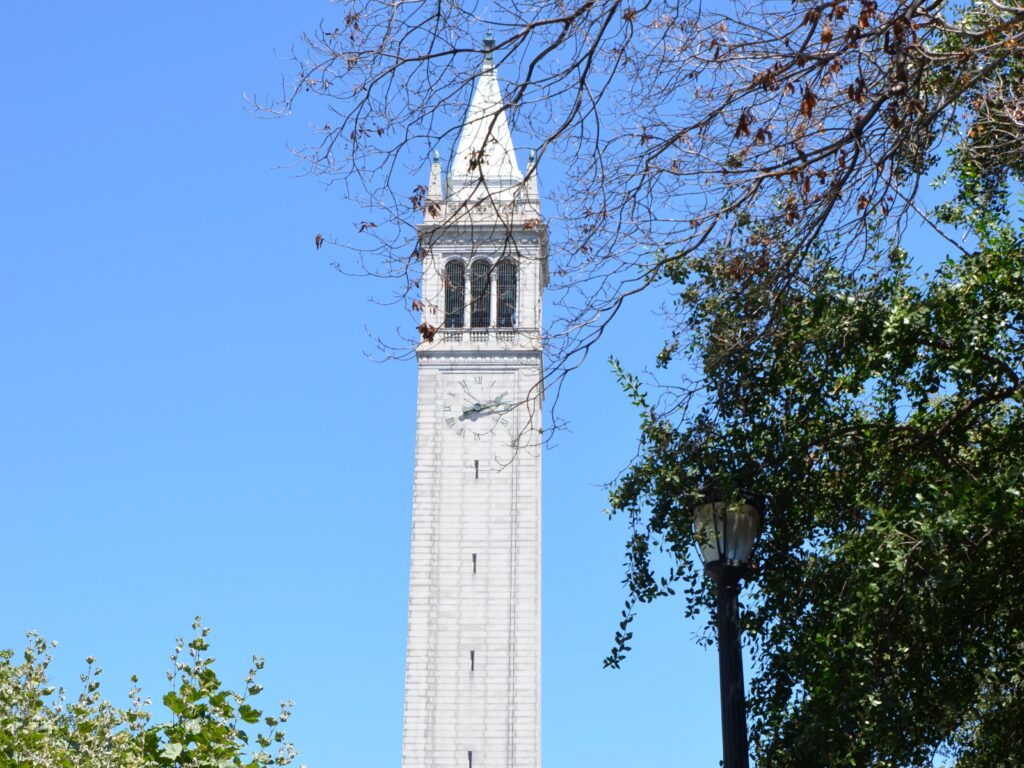
Another one of the prestigious UCs is Berkeley. Like UCLA, Berkeley is an esteemed college in its own right. Unsurprisingly, many UC transfers want to gain admission to this fantastic university.
To become a UC Berkeley transfer, you must first fill out the regular UC transfer application by the UC transfer application deadline: November 30. Remember, the UC transfer application deadline is the same for all schools, and you will only submit one application for all of the UCs.
Berkeley GPA requirement
To be a UC transfer at UC Berkeley, you must also prove that you can handle the school’s academic rigor. This is why the UC transfer application for Berkeley requires a minimum GPA higher than the regular UC transfer minimum. On their transfer requirements, UC Berkeley requires a 3.0 minimum GPA. Berkeley is a more selective school that places priority on academics, so it makes sense that your GPA matters.
In order to become a successful UC transfer to one of the more selective schools like Berkeley or UCLA, make sure that you’re taking your time on your UC transfer application. Fill it out thoughtfully and completely, with a special focus on the personal insight essays.
Does Berkeley accept transfer students?
Just like all of the UCs, Berkeley certainly accepts transfer students. Berkeley accepts 26% of transfer applicants, and 95% of those accepted UC transfers are from California community colleges!
If you’re from a CA community college, the UC transfer process is designed to help you thrive. The UC system wants to take as many community college students as possible and make it easier for those students to become UC transfers.
Berkeley does take transfer students from other four-year institutions, but it prioritizes community college students. This means that to be a UC transfer at Berkeley from another four-year school, you will be considered based on your “ personal circumstances and the availability of space. ”
UC Davis Transfer Requirements

The UC Davis transfer requirements are similar to the requirements of the other UC transfer applications. To fulfill the UC Davis transfer requirements, you will submit the same basic information on the UC transfer application: credits and courses that fulfill the course requirements, personal insight essays, and the UC application fee.
As you’ll see in our discussion of the UC Davis transfer acceptance rate, it’s quite a bit higher than other UCs. But don’t let that fool you! You’ll still need a stellar application to successfully transfer to any of the UC schools.
UC Davis transfer acceptance rate
So, just what is the UC Davis transfer acceptance rate? The UC Davis transfer acceptance rate is 57% . You’ll notice that the UC Davis transfer acceptance rate is twice as high as the acceptance rates for Berkeley and UCLA. Part of the reason for the UC Davis transfer acceptance rate is that the UC Davis transfer requirements have a different GPA than the other UCs.
According to the UC Davis transfer requirements, students must have above a 2.8 GPA —this means that the GPA to satisfy the UC Davis transfer requirements is even higher than the one for the general UC transfer application.
UC Davis TAG
Since the UC Davis transfer acceptance rate is higher than other UCs (Berkeley and UCLA), you’ll have a higher chance of getting into UC Davis if you apply through the general transfer UC application. Additionally, UC Davis is one of the schools in the UC TAG matrix. This means that you can apply for guaranteed admission to UC Davis. However, your GPA must be at least 3.2 to gain guaranteed admission through the UC tag program.
Now, let’s look at another transfer application: the UCSD transfer application.
UCSD Transfer Requirements

For the UCSD transfer requirements, you’ll need to satisfy all of the regular UC requirements. Predictably, this includes having a certain GPA, meeting the UC transfer application deadline, and having taken the appropriate courses and credits. The UCSD transfer requirements don’t specify that you need to have a higher GPA than the UC minimum. However, it does state that admitted students often exceed that minimum!
The UCSD transfer acceptance rate is 57%. This UCSD transfer acceptance rate is the same as the UC Davis transfer acceptance rate, so you have a pretty equal chance of getting into either school. Even though the UCSD transfer acceptance rate and the UC Davis transfer acceptance rate are the same, that’s not the case for all UCs—remember that there’s a big range.
Average GPA of transfer students
You can better understand the UCSD transfer acceptance rate by looking at the middle 50% of the GPA for accepted transfer students, which is between 3.48 and 3.91. This means that 25% of students had a higher GPA than this range, and 25% of students had a lower GPA. So, just because the UCSD transfer requirements don’t require a GPA higher than 2.4, we can clearly see that most admitted students have earned higher GPAs than that minimum.
The UCSD transfer acceptance rate reflects that 33% of the UCSD class are transfer students. If you’re looking for a class where students come from a variety of educational backgrounds and take different approaches to college admissions, UCSD would be a great place for you!
Transferring to UCSB

If you want to transfer to UCSB, make sure to follow all of the UC transfer requirements that we’ve already talked about in this guide.
Students transferring to UCSB should also know the UCSB transfer acceptance rate. The UCSB transfer acceptance rate is 60% , similar to the UCSD transfer acceptance rate. The UCSB transfer acceptance rate was calculated from a candidate pool of over 17,000 applicants, around 10,300 of whom were admitted.
91% of the students admitted within the UCSB transfer acceptance rate were from California community colleges. You might be noticing a trend—a large majority of the transfer students accepted to UCs are from local community colleges.
UCSB is part of the UC TAG matrix, which means that you can apply to transfer to UCSB and gain guaranteed admission. In order to participate in TAG, you must have a minimum 3.4 GPA . The UCSB transfer acceptance rate includes students who participate in TAG. So, if you have your heart set on UCSB and have the GPA to get you there, don’t underestimate TAG!
More UC Transfer Requirements

As you may have noticed, UC admissions can be very competitive. Let’s review some things you can do to set yourself up for success in the UC transfer journey.
Transfer pathways
If you want to transfer , the best thing you can do is start planning early. If you’re at a community college, the UCs offer many resources to help you plan and prepare for your transfer to a UC. One of those resources is Transfer Pathways , which helps you figure out what community college classes to take so that you can adequately prepare for a major at a UC. These pathways will help you plan your time at community college, and set you up to apply to a specific major at a number of different UCs.
General education courses
To ease the transition into academic life at a UC, UCs provide guidelines for how to fulfill general education requirements. Since these requirements can take a while to fulfill, it’s important to start early. IGETC is a series of courses at community colleges that will satisfy the sophomore and freshman requirements for general education at UCs. Note that each campus has slightly different general education requirements, so make sure to check them before taking the IGETC!
Application essays
Also, don’t forget that your transfer application is also a college application. Through your essays , you want to be able to communicate to the admissions committee why you’re choosing to transfer , and what you want to receive from your education.
The UC application and its essays are distinct within the college application space, and the transfer application is no different. Even when you’re applying as a transfer, learn about ways to make your application stand out .
And don’t forget–each school is different! Even if the UCSD transfer requirements look similar to the UC Berkeley transfer requirements, make sure to research each school to make sure that you are specific in your application. As always, prepare all of your materials well before the UC transfer application deadline. (The UC transfer application deadline for all schools is November 30.)
Which UC accepts the most transfers?
Though all of the UCs are pretty transfer friendly colleges, you may be wondering–which ones take the most transfers?
UC San Diego and UC Santa Barbara are the most transfer friendly colleges in the UC system. If you’re considering transferring colleges, especially from a community college in California, you’ll have the best odds of acceptance at UC San Diego.
UCSD admitted over 12,000 transfer students for Fall 2023 out of over 19,000 applicants. For context, Berkeley had a similar number of applicants and admitted around half as many students. This makes sense, given that the Berkeley acceptance rate is about half of the UCSD acceptance rate and the UCSB transfer acceptance rate. That’s why UCSD and UCSB are the two most transfer friendly colleges in the UC System.
Understanding the UC Transfer Application – Final Thoughts
When trying to maximize your chance at UC admissions as a transfer student, it’s crucial to understand the UC Transfer application. Here are some final takeaways:
Final Takeaways for UC Transfer
- Anyone can transfer into a UC, but the UC transfer process prioritizes California community college students for college admissions.
- In order to transfer, you need to have a minimum GPA of 2.4 (2.8 as an out-of-state resident), complete the right number of credits in seven transferable courses, and submit your application by the UC transfer application deadline.
- The UCs have programs like TAG (Transfer Admission Guarantee) and UC TAP (Transfer Admission Planner) to help you keep track of your courses and gain admission into a UC school. You can use the UC TAG matrix to check which schools are eligible for Transfer Admission Guarantee.
- Many of the UC schools have different GPA requirements—always research the school you want to gain admission into before you apply.
- You will apply to transfer into any of the UCs using the same application.
We hope that this guide on the UC transfer application has helped you feel more confident in transferring to a UC school! Remember that in addition to having a myriad of online resources to guide you in your transfer process, CollegeAdvisor also has a team of expert college admissions advisors. They’ve helped many students transfer to their dream schools, so don’t hesitate to reach out for more personalized guidance.

This article was written by Sarah Kaminski and advisor, Rachel Kahn . Looking for more admissions support? Click here to schedule a free meeting with one of our Admissions Specialists. During your meeting, our team will discuss your profile and help you find targeted ways to increase your admissions odds at top schools. We’ll also answer any questions and discuss how CollegeAdvisor.com can support you in the college application process.
Personalized and effective college advising for high school students.
- Advisor Application
- Popular Colleges
- Privacy Policy and Cookie Notice
- Student Login
- California Privacy Notice
- Terms and Conditions
- Your Privacy Choices
By using the College Advisor site and/or working with College Advisor, you agree to our updated Terms and Conditions and Privacy Policy , including an arbitration clause that covers any disputes relating to our policies and your use of our products and services.
- Search This Site All UCSD Sites Faculty/Staff Search Term
- Invitational Summer Institute
Young Writers' Camp
- Open Institute Programs
- Professional Development
- Year-Round Programs
- SDAWP Fellows
- Administrators
- Parents & Students
- College Essay
College Admission and Application Essay
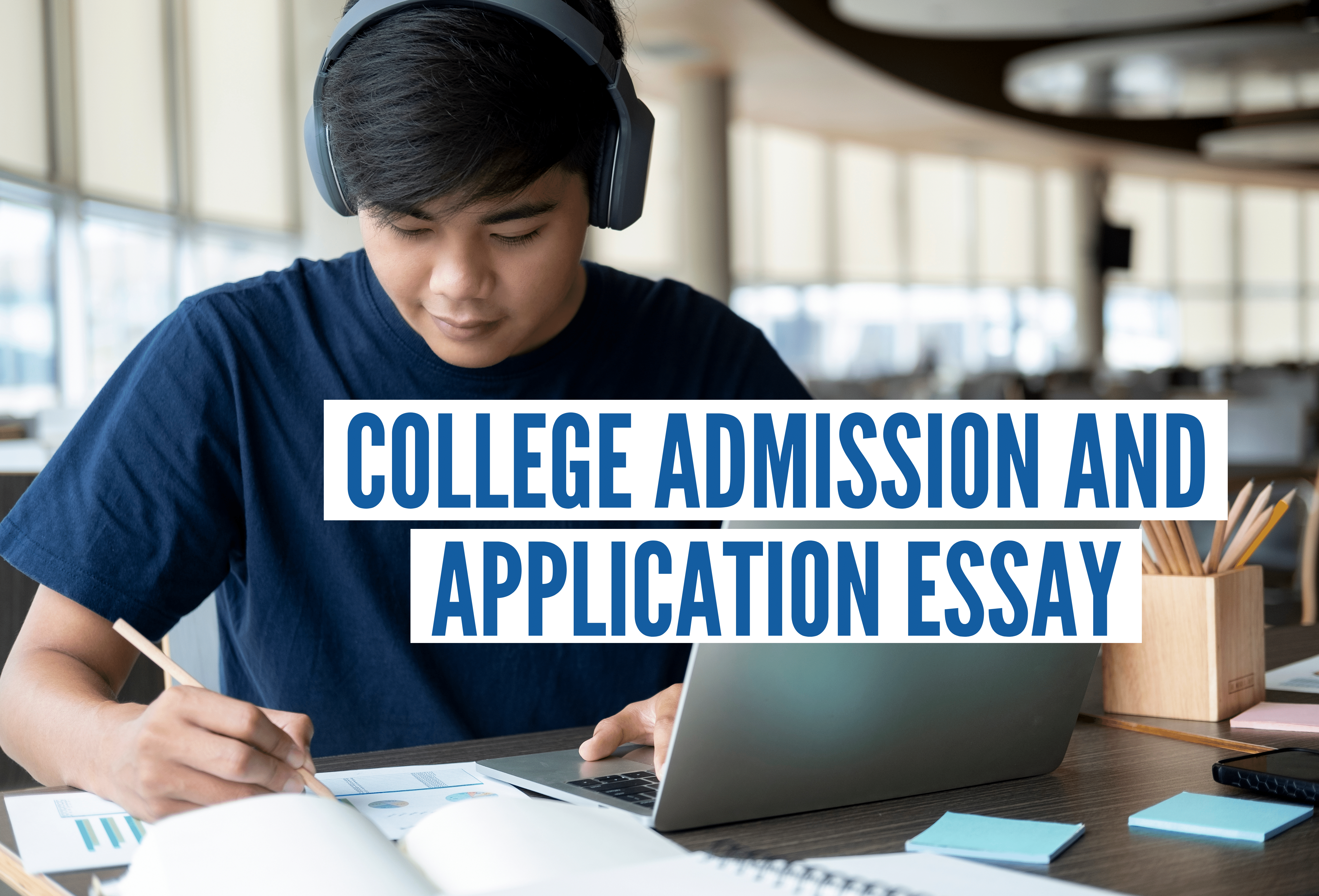
A virtual workshop for high school seniors and college transfer students.
You want your college essay to make a difference. Virtual camp will be interactive and engaging. You will have time to create on your own, come together for advice, participate in online peer revision with other young writers led by Teacher Consultants, revise and build better essays together.
Dates: July 22-26, 2024 Time: 8:30am-11:30am Cost: $400 (includes: 15 hours of group instruction with a 12:1 student-teacher ratio & follow up 1:1 session in October) Grades: Incoming Seniors Fall 2024 or transfer students Register Now: collegeessay.eventbrite.com
Students will:
- Learn to share your story in a way that will stand out to your readers and positively impact your future
- Receive personal attention and feedback
- Determine the most effective techniques
- Hear advice from college admissions officers
- Personal insight questions, details, and structures for a strong essay in the application process (UC guidelines)
- Common Application
- Coalition Prompts
- Scholarship Prompts
- Any other College Admissions writing response prompts
What previous campers have said...
- " Before joining my college essays only consisted of a few bullet point ideas of what I wanted to write about. Being in this group gave me the necessary tools I needed to get started on my essay and allowed me to get my ideas out. I now have many different essays to choose from and expand on. I feel very prepared now."
- "I think I will do a great job, I'm still nervous as its so important, but I think I will be done leagues before my classmates and will have a really amazing essay, this class was worth just coming up with ideas I would not have thought of otherwise."
- "This writing course enlightened me on what colleges are truly looking for when reading essays, it allowed me to give and receive critique, and gave me the tools I need to write impactful essays all while building relationships and working in groups along the way."
- "I feel like I have every ability to be able to write an effective college essay. At first, I was a bit nervous due to the fact that I tend not to write about myself or my story, but now I know that I have lessons that I can share to others that I would be proud of."
What parents have said...
- "Thanks so much for making this program work virtually. My daughter was really engaged in the program and I am grateful for the expertise shared by the instructors. I think the follow-up session will be particularly useful."
Register Now
College Admission and Application Essay via Zoom July 22-26 from 8:30-11:30am
Click here to register: collegeessay.eventbrite.com

- Young Writers in Nature
- Young Writers & Photography
- Young Writers' Camp 10 day
- Young Writers' Camp 5 day
Freshman requirements
- Subject requirement (A-G)
- GPA requirement
- Admission by exception
- English language proficiency
- UC graduation requirements
Additional information for
- California residents
- Out-of-state students
- Home-schooled students
Transfer requirements
- Understanding UC transfer
- Preparing to transfer
- UC transfer programs
- Transfer planning tools
International applicants
- Applying for admission
- English language proficiency (TOEFL/IELTS)
- Passports & visas
- Living accommodations
- Health care & insurance
AP & Exam credits
Applying as a freshman
- Filling out the application
- Dates & deadlines
Personal insight questions
- How applications are reviewed
- After you apply
Applying as a transfer
Types of aid
- Grants & scholarships
- Jobs & work-study
- California DREAM Loan Program
- Middle Class Scholarship Program
- Blue and Gold Opportunity Plan
- Native American Opportunity Plan
- Who can get financial aid
- How aid works
- Estimate your aid
Apply for financial aid
- Cal Dream Act application tips
- Tuition & cost of attendance
- Glossary & resources
- Santa Barbara
- Campus program & support services
- Check majors
- Freshman admit data
- Transfer admit data
- Native American Opportunity Plan
- You will have 8 questions to choose from. You must respond to only 4 of the 8 questions.
- Each response is limited to a maximum of 350 words.
- Which questions you choose to answer is entirely up to you. However, you should select questions that are most relevant to your experience and that best reflect your individual circumstances.
Keep in mind
- All questions are equal. All are given equal consideration in the application review process, which means there is no advantage or disadvantage to choosing certain questions over others.
- There is no right or wrong way to answer these questions. It’s about getting to know your personality, background, interests and achievements in your own unique voice.
- Use the additional comments field if there are issues you'd like to address that you didn't have the opportunity to discuss elsewhere on the application. This shouldn't be an essay, but rather a place to note unusual circumstances or anything that might be unclear in other parts of the application. You may use the additional comments field to note extraordinary circumstances related to COVID-19, if necessary.
Questions & guidance
Remember, the personal insight questions are just that—personal. Which means you should use our guidance for each question just as a suggestion in case you need help. The important thing is expressing who you are, what matters to you and what you want to share with UC.
1. Describe an example of your leadership experience in which you have positively influenced others, helped resolve disputes or contributed to group efforts over time. Things to consider: A leadership role can mean more than just a title. It can mean being a mentor to others, acting as the person in charge of a specific task, or taking the lead role in organizing an event or project. Think about what you accomplished and what you learned from the experience. What were your responsibilities?
Did you lead a team? How did your experience change your perspective on leading others? Did you help to resolve an important dispute at your school, church, in your community or an organization? And your leadership role doesn't necessarily have to be limited to school activities. For example, do you help out or take care of your family? 2. Every person has a creative side, and it can be expressed in many ways: problem solving, original and innovative thinking, and artistically, to name a few. Describe how you express your creative side. Things to consider: What does creativity mean to you? Do you have a creative skill that is important to you? What have you been able to do with that skill? If you used creativity to solve a problem, what was your solution? What are the steps you took to solve the problem?
How does your creativity influence your decisions inside or outside the classroom? Does your creativity relate to your major or a future career? 3. What would you say is your greatest talent or skill? How have you developed and demonstrated that talent over time? Things to consider: If there is a talent or skill that you're proud of, this is the time to share it.You don't necessarily have to be recognized or have received awards for your talent (although if you did and you want to talk about it, feel free to do so). Why is this talent or skill meaningful to you?
Does the talent come naturally or have you worked hard to develop this skill or talent? Does your talent or skill allow you opportunities in or outside the classroom? If so, what are they and how do they fit into your schedule? 4. Describe how you have taken advantage of a significant educational opportunity or worked to overcome an educational barrier you have faced. Things to consider: An educational opportunity can be anything that has added value to your educational experience and better prepared you for college. For example, participation in an honors or academic enrichment program, or enrollment in an academy that's geared toward an occupation or a major, or taking advanced courses that interest you; just to name a few.
If you choose to write about educational barriers you've faced, how did you overcome or strive to overcome them? What personal characteristics or skills did you call on to overcome this challenge? How did overcoming this barrier help shape who you are today? 5. Describe the most significant challenge you have faced and the steps you have taken to overcome this challenge. How has this challenge affected your academic achievement? Things to consider: A challenge could be personal, or something you have faced in your community or school. Why was the challenge significant to you? This is a good opportunity to talk about any obstacles you've faced and what you've learned from the experience. Did you have support from someone else or did you handle it alone?
If you're currently working your way through a challenge, what are you doing now, and does that affect different aspects of your life? For example, ask yourself, How has my life changed at home, at my school, with my friends or with my family? 6. Think about an academic subject that inspires you. Describe how you have furthered this interest inside and/or outside of the classroom. Things to consider: Many students have a passion for one specific academic subject area, something that they just can't get enough of. If that applies to you, what have you done to further that interest? Discuss how your interest in the subject developed and describe any experience you have had inside and outside the classroom such as volunteer work, internships, employment, summer programs, participation in student organizations and/or clubs and what you have gained from your involvement.
Has your interest in the subject influenced you in choosing a major and/or future career? Have you been able to pursue coursework at a higher level in this subject (honors, AP, IB, college or university work)? Are you inspired to pursue this subject further at UC, and how might you do that?
7. What have you done to make your school or your community a better place? Things to consider: Think of community as a term that can encompass a group, team or a place like your high school, hometown or home. You can define community as you see fit, just make sure you talk about your role in that community. Was there a problem that you wanted to fix in your community?
Why were you inspired to act? What did you learn from your effort? How did your actions benefit others, the wider community or both? Did you work alone or with others to initiate change in your community? 8. Beyond what has already been shared in your application, what do you believe makes you a strong candidate for admissions to the University of California? Things to consider: If there's anything you want us to know about you but didn't find a question or place in the application to tell us, now's your chance. What have you not shared with us that will highlight a skill, talent, challenge or opportunity that you think will help us know you better?
From your point of view, what do you feel makes you an excellent choice for UC? Don't be afraid to brag a little.
Writing tips
Start early..
Give yourself plenty of time for preparation, careful composition and revisions.
Write persuasively.
Making a list of accomplishments, activities, awards or work will lessen the impact of your words. Expand on a topic by using specific, concrete examples to support the points you want to make.
Use “I” statements.
Talk about yourself so that we can get to know your personality, talents, accomplishments and potential for success on a UC campus. Use “I” and “my” statements in your responses.
Proofread and edit.
Although you will not be evaluated on grammar, spelling or sentence structure, you should proofread your work and make sure your writing is clear. Grammatical and spelling errors can be distracting to the reader and get in the way of what you’re trying to communicate.
Solicit feedback.
Your answers should reflect your own ideas and be written by you alone, but others — family, teachers and friends can offer valuable suggestions. Ask advice of whomever you like, but do not plagiarize from sources in print or online and do not use anyone's words, published or unpublished, but your own.
Copy and paste.
Once you are satisfied with your answers, save them in plain text (ASCII) and paste them into the space provided in the application. Proofread once more to make sure no odd characters or line breaks have appeared.
This is one of many pieces of information we consider in reviewing your application. Your responses can only add value to the application. An admission decision will not be based on this section alone.
Need more help?
Download our worksheets:
- English [PDF]
- Spanish [PDF]
UC Davis Honors Its Iconic Eggheads and Arts Heritage
Campus marks 30th anniversary of robert arneson’s creations with egghead merchandise, museum display, special events.
- by Karen Nikos-Rose
- April 01, 2024
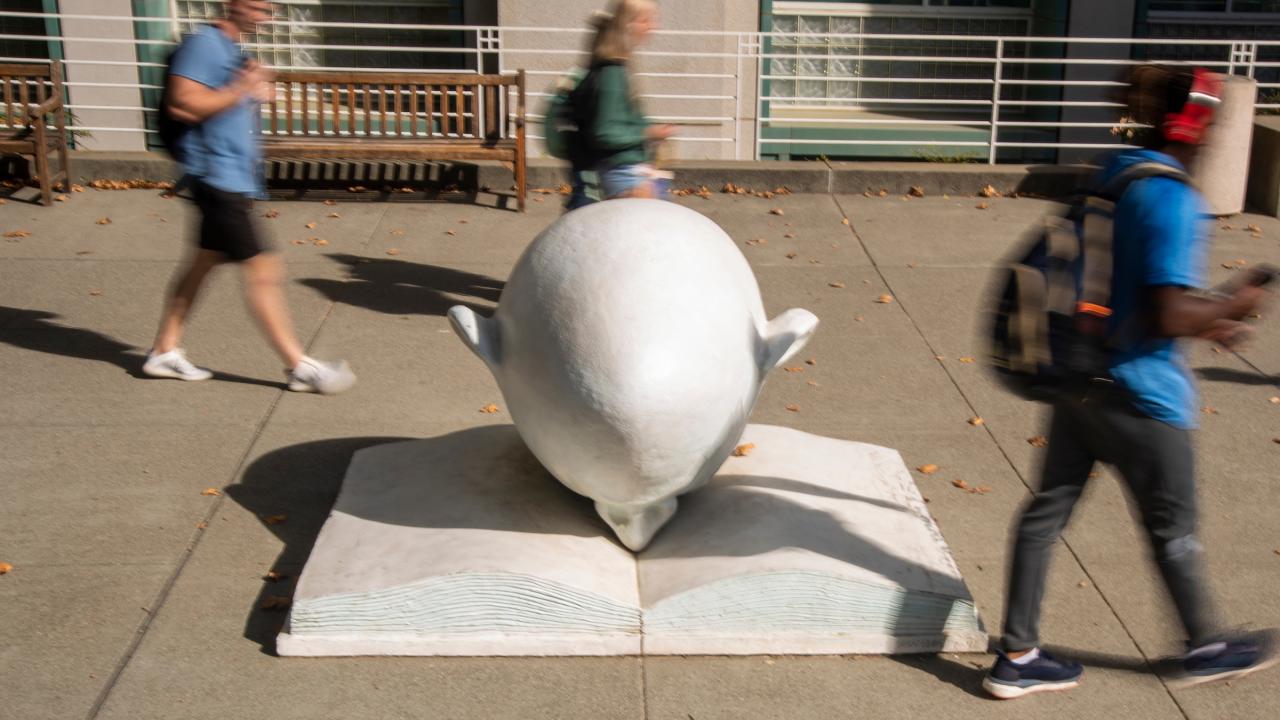
The edgy and expressive works of the late sculptor Robert Arneson can be found at the San Francisco Museum of Modern Art, the New York Metropolitan Museum of Art, the Smithsonian American Art Museum and many other museums and galleries throughout the world. Eight of his pieces line the walls at Shields Library on the University of California, Davis, campus where Arneson taught art for three decades.
But to students and alumni of UC Davis, Arneson’s most enduring legacy is the outsized, eggshell-colored Egghead sculptures on campus that they love, hug, and pose with in their caps and gowns at commencement — and on ordinary days, too.
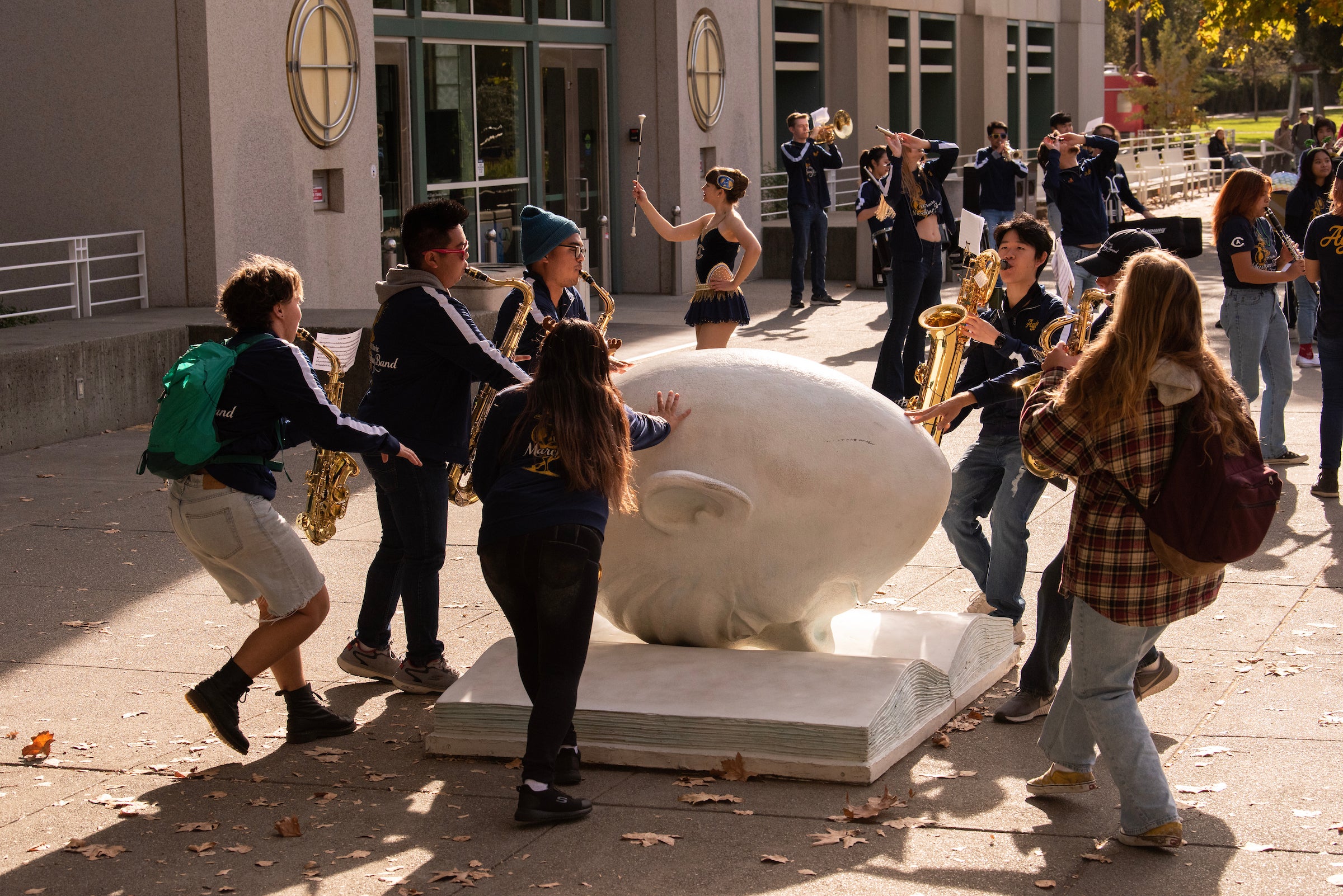
The sculptures on five central sites are part of the lore of the 5,300-acre campus, bringing everything from good luck during exams (kiss or rub the Bookhead ) to a watchful eye on campus administrators ( Eye on Mrak (Fatal Laff )). The Egghead Series exemplifies Arneson’s humorous take on serious subjects, as well as his vital role in the California Funk art movement that was incubated at UC Davis before reaching a global audience.
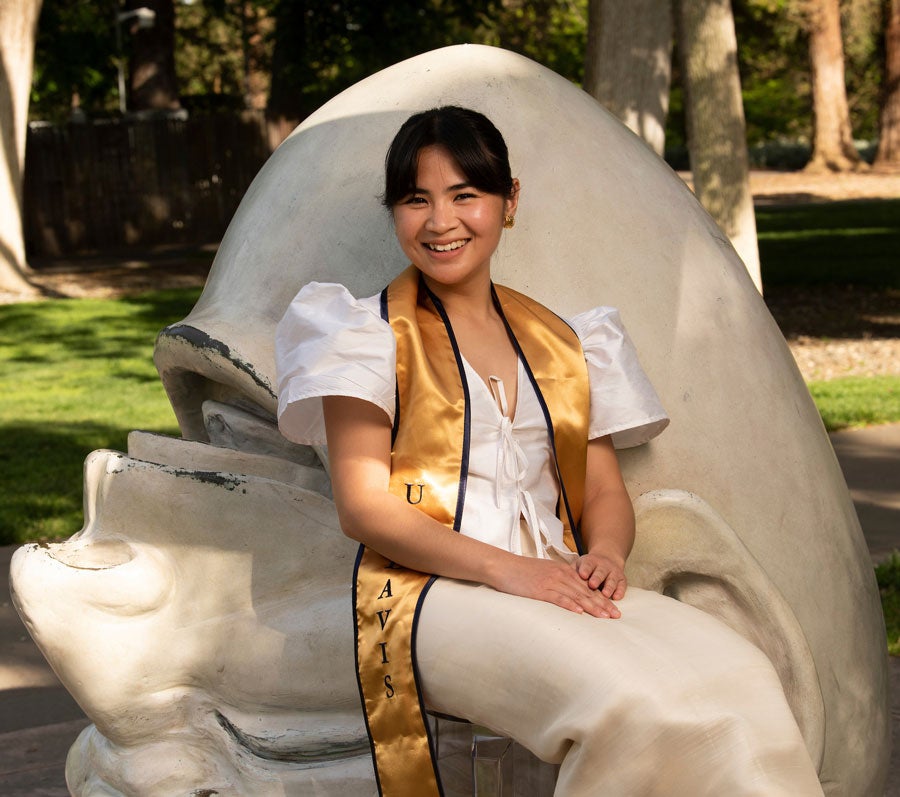
Throughout 2024 — 30 years after the final Eggheads were installed — UC Davis will commemorate this art heritage through a series of events, a special lobby display at the Jan Shrem and Maria Manetti Shrem Museum of Art, and a new line of Egghead-themed products that enable anyone to wear or take a piece of Arneson home with them.
“We are excited to celebrate the artistic legacy and impact of the Eggheads,” said UC Davis Chancellor Gary S. May. “Professor Arneson’s sculptures are an indelible part of campus life and a reminder of the power of public art to build community.”
Products and an interactive website go live today (April 1) followed by special events at the museum and beyond Thursday, April 4. A portion of proceeds from the sales of Egghead merchandise go toward the restoration and preservation of The Egghead Series.

Eggheads as campus icon
“It is unique that the UC Davis community has adopted a work of art as the symbol of our university,” said Rachel Teagle, founding director of the Manetti Shrem Museum. “Over the years, the Eggheads have taken on a life of their own and mean different things to different people, but ultimately reflect UC Davis’ values of freedom of speech and critical thought.”
The Egghead Series , installed at five sites during the 1990s, consists of the following. They are listed from where one sees the first Egghead in front of Mrak Hall, to the library, to sites near campus buildings.
Full walking instructions
- See No Evil/Hear No Evil in the traffic circle across from the School of Law’s King Hall (installed in May 1994 and moved to current location in November 2009 when King Hall constructed an addition)
- Eye on Mrak (Fatal Laff ) on the north side of Mrak Hall , installed May 1994
- Bookhead , in front of Peter J. Shields Library (the first of the sculptures, installed in October 1991; unlike the others, it is light blue)
- Yin & Yang , in front of Wright Hall , installed September 1992
- Stargazer , east of North Hall and south of Young Hall, installed May 1994
Arneson, who died of cancer in 1992, chose to base the sculptures on the motif of “egghead,” the slang term denoting intellectuals in general and academics in particular. They all reflect the powerful influence of the world, politics and UC Davis on his art. The site-specific works were commissioned by the then Campus Art in Public Places Work Group with private funds.

Arneson’s widow, Sandy Shannonhouse, a sculptor and UC Davis alum, said Arneson would have enjoyed all the ways in which the Eggheads are being enjoyed today.
“My family and I are thrilled that Bob’s legacy as an artist and as a professor at UC Davis are being honored today in ways that he would appreciate,” she said. “He had a tremendous sense of humor, and used humor to address critical political and social issues and encouraged his students to do the same.
“Above all, he always soaked up the knowledge, the culture and the spirit the university had to offer, and I hope students and faculty and everyone in the university community can take something from that.”
The Eggheads described
The works depict Eggheads working, playing, resting and conversing. A 1994 UC Davis news release described the installations that year:
One is an Egghead that will lie on its back on a hill near Young Hall, looking toward the sky with a contemplative expression. Another is an Egghead that is upside-down, located just north of Mrak and facing towards Shields Library, with an incised eye looking toward the fifth floor of Mrak with a strong grimace that could be interpreted as laughter or pain. Finally, two Eggheads will be installed east of the law school, leaning backwards slightly, as if having a debate, but neither has ears. …
Manetti Shrem Museum display
As part of the Egghead celebration, the Manetti Shrem Museum will showcase Arneson’s early models of the Eggheads in its lobby. Most of these models, known as maquettes, have never been shown before. Mounted near the large front windows, the display will be visible even when the museum is closed. Photos and stories submitted by Aggies about their memories and moments with the sculptures will accompany the Egghead models.
“ Hatched: The Making of Robert Arneson’s Eggheads” will be on view from April 1 to June 16.
Media Resources
Media Contacts:
- Karen Nikos-Rose, News and Media Relations, 530-219-5472, [email protected]
- Laura Compton, Communications Specialist, Jan Shrem and Maria Manetti Shrem Museum of Art, [email protected]
- James Nash, News and Media Relations director, [email protected], 530-219-0943
Additional Resources:
- More stories, art, copy and product information at eggheads.ucdavis.edu
- Media images and captions, map
- Video B-roll of Eggheads and Robert Arneson
- Video A-roll of Rachel Teagle, Sandy Shannonhouse and Gary S. May
- Of Serendipity and a Secret Sauce by Peter Plagens : On the occasion of the opening of the Manetti Shrem Museum in November 2016, artist, art critic and novelist Peter Plagens wrote this essay illuminating the maverick spirit of the artists and teachers who founded UC Davis’ art department.
- Art Studio Faculty Tapped for International Venice Biennale : UC Davis art professor Beatriz Cortez was invited to participate in the prestigious Venice Biennale arts and culture showcase, marking the first time in 40 years a current faculty member has been tapped for the honor.
Primary Category
Secondary categories.
More From Forbes
Transfer students see low acceptance rates at america’s top colleges.
- Share to Facebook
- Share to Twitter
- Share to Linkedin
At the majority of top colleges, transfer students face longer odds of being admitted than do ... [+] first-time, first-year applicants. At Harvard University, only .9% of recent transfer applicants were admitted.
In a year marked by policy changes, legal challenges and botched logistics, this college admissions cycle is being watched particularly closely.
Can the recent small rebound in enrollment be maintained? Will universities be able to overcome the bungled rollout of the Department of Education’s revised Free Application for Federal Student Aid that’s caused widespread havoc with financial aid offers? What will be the near-term impact of the Supreme Court’s prohibition of race-conscious admission policies?
While most media attention will be focused on the acceptance and enrollment of first-time, first-year students, another important enrollment outcome — particularly as an increasing number of students are considering their options for containing the costs of going to college — is the admission of transfer students.
How many transfer students apply to the nation’s leading institutions? How often are they accepted? And how do those outcomes compare to the admission of first-year students?
To examine the rate and fate of transfer applicants to the nation’s premier colleges, I used the 2022-23 Common Data Set posted at the website of each of Forbes’ top 25 colleges for 2023 . While a few institutions have posted results for 2023-2024, the 2022-2023 data sets were the most recent ones for which all 25 schools listed their results.
The Common Data Set is a standard form completed by institutions to report on a wide range of indicators such as applications, admissions, transfers, enrollment, retention, financial aid, and graduation. Application and admission data for first-time, first-year students are provided in item C1 of the Common Data Set, and applications from and admissions of transfer students are contained in item D2.
Transfer Applications and Acceptances
Here are the Forbes top 25 colleges and universities for 2023 reranked by the percentage of transfer applicants they accepted. In each case, the numerator is the number of transfer students offered admission; the denominator is the number of transfer applicants for the year.
Best High-Yield Savings Accounts Of 2024
Best 5% interest savings accounts of 2024.
U. of California, San Diego 11,586/19,723 58.7%
U. of California, Santa Barbara 10,246/17,642 58.1%
U. Michigan 2,062/5,683 36.3%
Columbia University 1,063/4,292 24.8%
U. California, Los Angeles 6,130/25,099 24.3%
U. California, Berkeley 4,714/19,380 24.3%
U. Southern California 2,141/9,100 23.5%
Vanderbilt University 471/2,833 16.6%
Cornell University 798/5,761 13.9%
Northwestern University 423/3,264 13.0%
Georgetown University 185/2,528 7.3%
Dartmouth University 44/599 7.3%
Johns Hopkins University 106/1,634 6.5%
Amherst College 30/503 6.0%
Brown University 152/2,836 5.4%
U. Pennsylvania 185/3,513 5.3%
Rice University 66/1,319 5.0%
Duke University 81/1,679 4.8%
Williams College 17/573 3.0%
Princeton University 35/1,201 2.9%
Swarthmore College 11/454 2.4%
Stanford University 57/3,141 1.8%
Yale University 32/1,973 1.6%
MIT 21/1514 1.4%
Harvard University 15/1,735 .9%
Implications
One obvious pattern emerging from these data is how much more common transfer admissions are at top public compared to top private institutions. Public universities constitute five of the seven schools accepting more than 20% of their transfer applicants, and they were the only institutions that accepted at least a third of transfer applicants.
Columbia University, which ranks fourth, is the only Ivy League institution to accept more than 15% of transfer applicants. Columbia is unique among the Ivies for its Columbia General Studies program, an undergraduate effort dedicated to serving nontraditional students, including those who are transfer applicants. Six of the eight Ivy League universities offered admissions to fewer than 10% of transfer applicants.
Much is made of the selectivity of top-ranked colleges. The odds of being admitted to most of the top 25 schools as an entering first-year student, particularly those that are private, are on average very slim. Indeed, high rejection rates are often touted by these schools as a proxy for their educational excellence.
Among the top 25 schools, the admission rate for first-time, first-year applicants ranged from 3.1% (Stanford University) to 25.8% (University of California, Santa Barbara), with a median of 7.2% (Northwestern University).
However, the admission rates for transfer students to these institutions were even lower on average, ranging from .9% at Harvard University to 58.7% at the University of California, San Diego. The median transfer admission rate was 6.5% at Johns Hopkins University.
Here is another way to compare the admission odds. At the majority of these institutions (13), the acceptance rate for transfer students was lower than the acceptance rate for first-time, first-year applicants. Eight institutions (Princeton, Yale, MIT, Harvard, Williams, Amherst, Dartmouth and Swartmore) admitted fewer than 50 transfer applicants each for the year. Three others (Stanford, Duke and Rice) admitted fewer than 100.
What cannot be determined from an institution’s Common Data Set is how the academic qualifications of transfer applicants compare to those of first-time, first year applicants. Consequently, it’s not clear how much variance in acceptance rates is due to an institution’s preference for first-year or transfer students and how much may derive from differences in applicants’ academic preparation.
Most institutions express a commitment to educating racially and socioeconomically diverse students. How well they fulfill that commitment is too frequently a different story. With explicitly race-conscious admissions now banned by the Supreme Court, colleges are turning to other strategies like more institutional financial aid and intensified outreach to admit a greater number of traditionally underrepresented students.
However, one resource that appears to be underused by many prestigious schools is greater attention to the admission of transfer students, who, particularly among those starting college either at two-year schools or less selective four-year institutions, are more likely to be students of color and come from lower income families than their peers at more selective institutions.
If top-ranked colleges want to make good on promises to improve the representativeness of their student bodies, admitting more transfer students is an obvious place to start. The University of California system serves as a very good example of this policy. Of the more than 40,000 transfer students accepted for admission at these 25 leading institutions, 80% were accepted by four UC campuses.
- Editorial Standards
- Reprints & Permissions

IMAGES
VIDEO
COMMENTS
Choose to answer any three of the following seven questions: 1. Describe an example of your leadership experience in which you have positively influenced others, helped resolve disputes, or contributed to group efforts over time. Things to consider: A leadership role can mean more than just a title. It can mean being a mentor to others, acting ...
This worksheet is designed to help transfer applicants start the writing process for the personal insight questions in the undergraduate admissions application. Additional hints and suggestions can be found on UC's admissions website at ucal.us/personalquestions. What are the personal insight questions?
The Common App gives you the chance to make one single, bold, loud statement—a 650-word personal statement—and to embellish that essay with more information in the Activities section and, in some cases, in supplemental essays. The UC application, by contrast, gives you four chances to make shorter, more focused statements.
Welcome! The University of California school system covers 10 universities across the state. The UC system does things its own way—they have a separate application and (you guessed it) a separate list of essays to write. For example, outside of the PIQs, the UC system asks you to write an activities list and provides space for additional information, both of which we can help you with too.
Transfer applicants are asked to respond to one required question (more on this below) and choose three of seven remaining prompts to respond to in 350 words or fewer. These seven prompts overlap with the UC freshman personal insight questions (except for prompt #6), so be sure to check out our UC Essay Guide to explore those prompts and our ...
Remember that admissions officers are reading dozens or even hundreds of essays a day, so get straight to the point and avoid unnecessary details or fluff, as a tangled essay may cause their mind to wander. 7. Edit and proofread: Ensure your essay is polished and free of errors by editing and proofreading multiple times.
The UC application essays are your way to give admissions staff a sense of your personality, your perspective on the world, and some of the experiences that have made you into who you are. The idea is to share the kinds of things that don't end up on your transcript. It's helpful to remember that you are not writing this for you.
Some of the best essays are small. Consider these from a few of my clients: (1) The importance of a student's beloved sneaker collection; (2) a barista giving a free coffee to a stressed customer and the unexpected result; (3) a student who once a month took a homeless man's dog for a bath. You get the idea. 5.
Each response is limited to a maximum of 350 words. Which questions you choose to answer is entirely up to you, but you should select questions that are most relevant to your experience and that best reflect your individual circumstances. There is one required question you must answer. You must also answer 3 out of 7 additional questions.
UC Transfer Essay Overview Required question: Please describe how you have prepared for your intended major, including your readiness to succeed in your upper-division courses ... Beyond what has already been shared in your application, what do you believe makes you stand
Freshman Applicants: You will have eight questions to choose from, you must respond to any four of the eight questions. The questions you choose to answer are entirely up to you. Transfer Applicants: There is one required question you must answer; then you answer three out of seven additional questions. Which three of the seven you choose to ...
Essay #1: Leadership. Prompt: Describe an example of your leadership experience in which you have positively influenced others, helped resolve disputes, or contributed to group efforts over time. (350 words) 1400 lines of code. 6 weeks. 1 Pizza. I believe pizza makers are the backbone of society.
UC Transfer Admission Planner (TAP) UC Information on Transferring. UC Transfer Pathways. If you already have a major in mind, learn about a single set of courses you can take to prepare for your major. Transfer Pathways provides you with a clear roadmap to prepare for your major and be well positioned to graduate on time. UCLA Transfer ...
Unit Maximum Admissions Policy: After applying the UC lower-division maximum transfer credit limitation policy, all junior/senior (upper division) and all UC units (lower division and upper division) are added to that total unit count. If the resulting unit count exceeds 80 semester units (120 quarter units), the student is ineligible for ...
After submitting the UC application in November, you must also complete and submit the Haas supplemental application by January 31. The supplemental application will appear in your MAP@Berkeley Portal in early January. The supplement includes: a self-reported academic record, an essay question, optional activities and awards update, and
The UC transfer application requirements specify that you must have earned at least a 2.4 GPA, or a 2.8 GPA if you don't live in California. ... personal insight essays, and the UC application fee. As you'll see in our discussion of the UC Davis transfer acceptance rate, it's quite a bit higher than other UCs. But don't let that fool you!
Even though most resources on this topic target incoming freshmen or CC transfers, the advice will still apply to you. The UC-UC essay writing process is exactly the same. ... and that i was committed to my major. in transfer admissions, major prep is super emphasized by the UCs, so its important that you show that you are passionate and ready ...
Hear advice from college admissions officers; Learn about the role of admission and application essays, including: Personal insight questions, details, and structures for a strong essay in the application process (UC guidelines) Common Application; Coalition Prompts; Scholarship Prompts; Any other College Admissions writing response prompts
Remember, the personal insight questions are just that—personal. Which means you should use our guidance for each question just as a suggestion in case you need help. The important thing is expressing who you are, what matters to you and what you want to share with UC. 1. Describe an example of your leadership experience in which you have ...
Merchandise being sold in the Year of the Eggheads. (UC Davis) Eggheads as campus icon "It is unique that the UC Davis community has adopted a work of art as the symbol of our university," said Rachel Teagle, founding director of the Manetti Shrem Museum. "Over the years, the Eggheads have taken on a life of their own and mean different things to different people, but ultimately reflect ...
Application and admission data for first-time, first-year students are provided in item C1 of the Common Data Set, and applications from and admissions of transfer students are contained in item D2.